




Abiba Biao, The Arts Paper newhavenarts.org
On screen, Barbara Fair scooped a heaping spoonful of macaroni and cheese onto a plate and pulled back the foil on containers, ready for a dinner rush. Around her, conversation rose and fell; organizers chatted; kids ran around the space, getting their sillies out. She reminded a colleague to make sure everyone had a plate, including the DJ.
Then she went back to her quest to end solitary confinement in Connecticut. She was a superwoman, and deeply human at the same time.
That balance of humanity, kindness and fiery, sustained activism lit up the Flint Street Theater last Sunday, as New Haven based filmmaker Travis Carbonella screened his in-progress documentary, Stop Solitary CT: The Fight for Oversight as the second film in “Elm City Reels,” a four-part series celebrating New Haven directors.
Over a dozen attended Sunday, including Fair’s family and Carbonella’s mother, Joanne. The series comes from New Haven musician, artist and Seeing Sounds curator Trey Moore (a.k.a. Orion Solo), who also works as the theater’s manager. After starting with Stephen Dest’s My Brother Jack in September, the series continues next week with Haven: The Se-ries from director Jacqueline Brown. Learn more about Elm City Reels here.
“There’s nothing more interesting than seeing one life unfold itself,” said Carbonella, speaking on the power of documentary film, “Something that you can’t write or you can’t manufacture.”
Stop Solitary CT, which is Carbonella’s second full-length documentary, fol-lows Fair through the 2024 state legislative session, during which she is on a journey to appoint a state ombudsman for the Department of Corrections (DOC). An ombudsman refers to an impartial government official who in-vestigates and revolves complaints within organizations; attorney DeVaughn L. Ward now serves in that position.
Founded in 2017—around the time that there was already a legislative push to end solitary confinement in the state—Stop Solitary CT is a nonprofit or-ganization advocating for prison reform, and specifically an end to the cruel and inhumane practice of solitary confinement. In addition, it advocates for causes such as ending state-sanctioned sexual assault through strip search-es.
The film opens on an establishing shot of the Whitneyville Cultural Com-mons (WCC) in Hamden, where Fair hosts community meetings and com-munity lunches. It’s a sort of starting point, both literal and metaphorical, for the advocacy and grassroots organizing Fair does in New Haven to Hamden to Hartford, from the WCC to the streets to the State Capitol building.
In the audience, viewers see her make the journey to Hartford, partnering up with other advocacy groups like the American Civil Liberties Un-ion (ACLU), members of the press like former CT Mirror justice

reporter Jaden Edison, and state legislators including State Sen. Gary Winfield and former State Rep. Robyn Porter.
Part of that is Fair’s advocacy and search for a state ombudsman that will hold the Department of Corrections accountable. That began in 2023, when the state created the role under the Office of Government Accountability to increase transparency for the DOC due to poor misconduct in correctional facilities and criticism it accrued over the years. That includes the cruel treatment of her son, Shelton, who she said was never the same after time in prison.
Fair was one of three nominees for the position, alongside New Haven civil rights attorney Ken Krayeske and Windsor-based public defender Hillary Carpenter. Last January, the Correction Advisory Committee recommended that Krayekse occupy the role, ranking him as their first choice. Fair fol-lowed second, and Carpenter fell last, based on their competency to lead. Despite the suggestions from the Correction Advisory Committee, Connect-icut Gov. Ned Lamont acted outside of their advice, selecting Carpenter for the role. The race became contentious and the process stalled to a halt, with members of the Executive and Legislative Nominations Committee failing to push her forward. Carpenter received strong opposition from prison reform activists, with Fair leading the charge. Critics of her nomination argued that she did not have the lived experience to correctly serve in the role. In the end, she was not confirmed to be the state ombudsperson for the DOC, and the process returned to square one.
Throughout Fair’s constant trips to the capitol, viewers meet the people who remained by her side, including Porter and State Rep. Anne Hughes. Porter, who stepped down last year, represents New Haven and part of Hamden; Hughes represents Easton, Weston, and Redding. As the film rolled, audience members watched Fair in action, a dynamo who always man-

aged to foreground both her and others’ humanity.
When the film ended Sunday, Moore and Carbonella took the stage for a di-rector Q & A, which takes place after every film in the series. Almost imme-diately, Fair’s daughter Kiera Tucker wanted to know how Carbonella main-tained his stamina and interest while filming over two years.
“Did any part of you ever question like, ‘Ok why am I here? What am I get-ting from this?” she asked the filmmaker.
Carbonella listened intently, then said he’d been passionate enough about the subject to stay with it. To film something like the fight against solitary, one has to be, he acknowledged: Carbonella managed three different cam-eras to capture A- and B-roll of community hearings, and made constant trips to Hartford with Fair. He leveled audio, edited footage, and then he collected more. He was determined to see it though.
It helps that he loves and admires Fair, who he met 15 years ago when they first crossed paths at Youth Rights Media. A
It’s in this scene that viewers realize that Fair isn’t just a prison reform ad-vocate, but a human being with hopes, dreams, and desires just like film spectators themselves. While Fair is an indomitable spirit and steadfast mind, the body cannot escape the toll from vicarious trauma. It shouldn’t have to either, the film seems to say without ever having to use the words. Two days before a scheduled visit to the state legislature, Fair reveals that she was hospitalized for high blood pressure due to mounting stress. Carbonella documents it all, reminding people how the broken sys-tems come at a disastrous and sometimes devastating cost for the people who must interact with them.
Carbonella talked about the gift of documenting those small habits that make Fair more human, from her choice to end meetings with bingo to her near-constant humming, a song always in her head. He stressed that it was important to him to show the raw, unfiltered process of advocacy work, and the way that work also must include breaks to be sustainable.
“[These are] small things … that make you not an activist anymore, but turn you human,” he said. “Like, just into a regular person. And that's really im-portant, especially when you highlight activism, because it always seems like an activist or someone who's doing activism is superhuman.”
“I like the part how you ended it with the bingo,” chimed in Fair’s cousin, Celeste Hill. “But was it difficult to add the singing to it too?” The audience filled with laughter.
Carbonella was also honest about the realities of being an artist interested in social justice work, including the difficulty of getting the film into screen-ing rooms. In previous projects, he’s worked on content mainly for social media. He’s still not always sure how to get it in front of people.
decade and a half later, the two have a relationship that is both personal and professional, often like family. That comes through as viewers watch a tumultuous legislative process, and root for Fair as she tries to communicate with legislators who don’t always give her a direct answer or even the time of day.
Carbonella’s eye is also gentle and curious, reminding viewers that Fair, known for her tireless and fierce advocacy, is also human. She wants the same things viewers likely all want: for her family to be safe, for her kids to have access to everything they need, for her life not to feel exhausting. She wants people to get beyond survival.
In one part of the film, Fair finds herself in a karaoke bar, a week after the hearing in which she contested Carpenter’s nomination. She sings her heart out, hitting a high note with questionable pitch. During such heightened stakes in the legislative process, she’s still running on a reserve of hope, tak-ing the time to connect with friends and family members.
Fair’s daughter, Holly Tucker, raised her hand and offered a solution. A student of sociology and human services at Albertus Magnus College, Tuck-er suggested it be shown in high schools and post-secondary institutions like Albertus, or integrated into curricula that focus on law and social justice.
She also shared her gratitude for Carbonella’s efforts. As she spoke, she faced Carbonella’s mom, Joanne, who sat in the back row.
“You have an amazing son and [from] doing that film, he's become family,” she said, adding that her seven brothers “all love Travis.”
“He's just a new family member now,” she added.
Joanne Carbonella, in turn, fondly remembered how Carbonella became in-terested in film, from a camcorder he received one year for Christmas to an early career making music videos, skits and small projects with friends. Now, she said, it feels like a full circle moment.
“He’s been doing this with his heart for so many years,” she said. “Every piece that he does, you could see the connection and it’s so heartfelt … You feel it, you know?”
Claire Armstrong, The Arts paper newhavenarts.org
The song opens with slow, fuzz-kissed guitar, as the lyrics sprawl over the track, and a single, dancing flame gives way to a face. The writer and musi-cian Aug Stone is surrounded in shadow, lip syncing along to his lyrics.
Rachel’s in my dreams again/Regrets, silent screams again, he sings. Cymbals ring out, interwoven with Rachel Love's soothing backing vocals. Rachel’s curls unfurl again/Her eyes unobscured again. The scene shifts to a woman’s face, gold and glowing in the flicker of a candle. The sky-line of New Haven is waiting somewhere above, ready to reveal itself.
That is part of "Rachel on the Rooftops," a new single and video from Connecticut-based singer/songwriter and author Aug Stone that casts New Ha-ven as one of its main characters. Inspired by a recent dream, the song is a love letter to the Elm City and to the magic of the subconscious, with a pull that has also brought the artist back to songwriting. It’s also the first in which Stone, who has been in a handful of bands like H Bird and The Soft Close-Ups, is putting his name out there simply as himself. Stone, who may be best known for his book The Ballad of Buttery Cake Ass, dropped the single Sept. 9. It is available for streaming and download eve-rywhere except for Spotify, including on the artist’s Bandcamp.
“I find if I get up and just grab my guitar first thing and play for even just 10 minutes, I’m happy for the rest of the day,” Stone said in a recent interview with the Arts Paper. “I care about my lyrics, and I want them to mean some-thing.”
That’s actually part of where “Rachel on the Rooftops” comes from. Months ago, Stone had a dream that he was in a studio in Boston, and got up and left. When he walked up onto a rooftop, he saw an old friend of his named Rachel. When he awoke, he was in a rush, but still decided to try putting words down.
About 80 percent of the song came out right away, he said. A melody soon followed. When he thought about who else he wanted on the rack, the real-life artist Rachel Love, once a member of the band Dolly Mixture, sprang to mind. He’s a longtime fan, he said, and was excited for

the opportunity to work with her.
“I was kind of nervous asking her if she’d sing, but I thought it would be so perfect with the song being called ‘Rachel on the Rooftops’ and her being Rachel,” he said.
In February, Stone began to enlist different musicians, in what became a wide-ranging collaboration. He reached out to Sam Carlson, the owner of Sans Serif Recording on 770 Chapel St., to provide drums and recording for the folks based in Connecticut. He connected with an old friend in Nash-ville, the musician Dylan Rowe, for bass guitar. Love sent
vocals all the way from the U.K., which thrilled Stone when he heard them.
“It was a huge honor” to work with her, he later wrote in a release for the song.
By May, it was time to mix the music, and Stone was thinking about visual components. To the song—he credits Carlson, among others, for working with him to make it come together—he started building a video in which the Elm City would play a pivotal role. New Haven is an integral part of his story as an artist: he spent several years getting to know
music through city insti-tutions like the late, great Cutler’s Records, which no longer exist. He en-listed Connor Rog, co-founder of Kicker Pictures, to shoot the video and Olivia Marino to play the part of Rachel.
“The big thing that struck me about the making of ‘Rachel on the Rooftops,’ was the number of collaborators and how far-flung everyone was,” Carlson said in an email earlier this month, adding that he was delighted to help the vision come to life. Carlson has worked with Stone on an audiobook, and remembered seeing a few of his performances as Young Southpaw
at the former State House. “Aug's collected a lot of really interesting collaborators over the years, and seems to be a welcome presence in alcoves across the world.”
“Aug's a great guy, and his ideas are never quite what one expects!” he add-ed.
That translates to the final cut of the video. As the shot opens, the viewer sees only a dark space where a candle is lit, illuminating Stone as he sings, and then Marino, candle in hand, as she joins in. The scene jumps between the two of them, then hops to Stone in a t-shirt and long coat, extending his arms in the bright light of day as New Haven expands behind him. The wind ruffles his hair like an old friend.
That interplay between in and outside, the artist’s subconscious and the written craft, sometimes mirrors the single’s cover art with drowsy dusk lighting, a purple-pink sky and sense of calm that permeates Rachel Love’s soothing backing vocals.
For Stone, the song also marks a meaningful return to songwriting. Before writing and performing the piece, Stone thought that he was done with mu-sic, he said. He’d collaborated with a friend on a 35-song project, but “noth-ing came of it,” and his disappointment pushed him away from the medium. For a while, he focused his energy elsewhere, writing essays and books, and dipping a toe into audiorecording. “Rachel” pulled him back in.
It’s understandable that it did. As a finished piece, “Rachel On The Roof-tops” has clear and distinct instrumentation, with backing vocals that string the lyrics and notes together. It invokes the feeling of nostalgia and con-tentment, as if the listener is going round and round in circles on a sonic carousel. There’s a sense, indeed, of being on the rooftops—leaving a listen-er isolated, maybe, but not alone. That is, because Rachel is there with them. It’s dreamy and also delightful, the kind of song a person can stay in for multiple listens.
Claire Armstrong is a senior at Common Ground High School and a gradu-ate of the Arts Council's 2025 Youth Arts Journalism Program.

On March 3, 2020, during the beginning of the Covid-19 pandemic, I was diagnosed with Stage 3 invasive ductal carcino-ma.
Prior to this I had always attended my yearly mammograms, but due to my high demanding job, I lost touch with taking care of my own health needs and missed my last mammogram. When I tell you God is so amazing, it is true, and I will always put Him first. He told me to sleep on my side with my arms crossed and hands on the side of my breasts and low and behold I felt a lump in my left breast.
I immediately jumped up and put my hand in the spot again to make sure. In the morning, I immediately reached out to my doctor to schedule a mammogram, after which I was referred for a biopsy. I was so grateful to my mom and daughter for being by my side. It was the one and only time I was able to have someone with me during my treatment due to Covid restrictions.
I remember when my doctor contacted me with the results on March 3rd. I was at work and everything else about that day was a blur. I don’t remember how I made it to my daughter’s house to tell her first. That whole day I just slept. I didn’t know how to tell my mom, let alone say the word “cancer.” I was in complete denial until my third or fourth chemo treat-ment when my hair started to fall out in patches. That’s when the reality of what was happening to me was real.
I had to have a crying moment for one

day before my hairdresser was gracious enough to cut my hair off at her home. That meant so much to me. She made me feel so good in that moment, I am forever grateful to Sharon Clemons. There was also a time during my treatment when I couldn’t get chemo for two weeks because my white blood cell count was extremely low which gave me such anxiety and I thought I was going to die.
God had other plans for me. He kept sending me reminders from strangers who didn’t even know me saying, “You’re going to make it to the other side,” and they even prayed for me.
Cancer brought on so many other complications including another surgery to remove nodules from lungs revealing Non-Hodgkin’s Lymphoma. I was being poked and prodded and felt completely depleted. But when I had my lumpectomy sur-gery, on October 1, 2020, and I got the good news – I was cancer free – I felt like I had a whole new lease on my life.
I am so grateful to my support team of family and close friends who showed me so much love and support when I needed it the most. The Yale Smilow Cancer Hospital was wonderful and very caring. I even received financial support from several organizations. I am not a person who is used to receiving but rather always a giver. God showed me this was a time for me to receive and get a return on my giving to others.
by Maya McFadden
While most violent crime stats are down, Victim Services Officer Nikki Curry sees on a daily basis that the city is caught in a “generational cycle” of loss and pain that numbers alone don’t capture.
Curry shared that perspective with top cops from New Haven (and Poland) during the city police department’s latest crime-data-focused CompStat meeting, which was held on Thursday at City Hall. The CompStat data showed that, through the week ending Sept. 28, the city had seen 14 homicides so far this year, compared to 8 by this time last year. The data also showed that New Haven had seen 27 nonfatal shooting injuries, compared to 73 at this time last year; 221 burglaries, compared to 372 at this time last year; 556 motor vehicle thefts, compared to 777 at this time last year; and 78 confirmed shots fired, compared to 139 at this time last year.
Thursday’s meeting took place two days before the funeral of Career High School student Kaiden Phillips, who was shot and killed on Sept. 27 in Newhallville. He was the city’s second 15-yearold homicide victim so far this year, following Aaron Robinson’s shooting death in April in the Hill.
Curry described invisible scars passed
down through the generations when families are affected by street violence.
“We’re reading all these stats of how crime is down, but we’re burying a 15-year-old this Satur-day,” Curry said.
She noted in a Monday interview that trauma continues years later for families. Rather than hun-dreds of teenagers, teachers, and coaches being able to enjoy Saturday’s warm weather, she said, they gathered at Kaiden’s funeral to mourn his death. “It’s never one and done,” she said.
“These victims are more than numbers.”
Curry spoke on Thursday about how Kaiden had lost his father in 2019. She also spoke about the “accidental” shooting death of 8-year-old New Havener Stacey Glasgow in March. She raised con-cerns about how these traumatic situations impact families and the community as a whole.
In her role with the police department’s victim’s services division, Curry helps victims of a variety of crimes, like major assaults, motor vehicle accidents, and robberies and shootings. She said Thursday that she hosted a successful “Survivors of Homicide” meeting through the police de-partment a week before. She said at the meeting she heard from Hillhouse teens who opened up about their pain of grieving family members who have died by homicide.
“How many caskets and funerals this

year of teenagers that we had to go to?” Curry asked.
Curry went on to speak about a September burglary at Friends Mini Market

John P. Thomas Publisher / CEO
Babz Rawls Ivy Editor-in-Chief Liaison, Corporate Affairs Babz@penfieldcomm.com
in Fair Haven where three young people were taken in by police for stealing vapes and money from the store clerk. Cur-ry said two of the three alleged perpetrators were brothers who have three other brothers in the criminal justice system.
“In a lot of these reports that I’m reading with the victims, a lot of them start off missing school,” Curry said. “Reported missing person, run away from home. [They] start stealing cars, motor vehi-cle thefts. Then it goes up to burglary, then robbery, then assault, and a lot of them come from gen-erations where their fathers are dead, their siblings are murdered, or they’re coming from the of-fenders.”
After Curry’s report Thursday, Police Chief Karl Jacobson said, “We do understand the logistics of ‘Yes, even though violent crime is down, we have lost some teenagers,’ and we’re working very hard with all our partners from Youth Connect, to Project Longevity, to CTVIP. That’s why we’re doing things with our officers, SRO’s [school resource officers] go out and talk to all these kids to make it a reality so that the kids realize that there’s no second chances when it comes to gun violence.”
“The Most Depressing Day”
Con’t on page 09
Advertising/Sales Team
Keith Jackson Delores Alleyne
John Thomas, III
Editorial Team
Staff Writers
Christian Lewis/Current Affairs
Anthony Scott/Sports
Arlene Davis-Rudd/Politics
David Asbery / Tanisha Asbery
Jerry Craft / Cartoons / Barbara Fair Dr. Tamiko Jackson-McArthur
Michelle Turner / Smita Shrestha William Spivey / Kam Williams Rev. Samuel T. Ross-Lee
Contributors At-Large
Christine Stuart
www.CTNewsJunkie.com
Paul Bass www.newhavenindependent.org
Memberships
National Association of Black Journalist National Newspapers Publishers Association Greater New Haven Chamber of Commerce Greater New Haven Business & Professional Greater New England Minority Supplier Development Council, Inc.
The Inner-City Newspaper is published weekly by Penfield Communications, Inc. from offices located at 50 Fitch Street, 2nd Floor, New Haven, CT 06515. 203-3870354 phone; 203-387-2684 fax. Subscriptions:$260 per year (does not include sales tax for the in State subscriptions). Send name, address, zip code with payment. Postmaster, send address changes to 50 Fitch Street, New Haven, CT 06515. Display ad deadline Friday prior to insertion date at 5:00pm Advertisers are responsible for checking ads for error in publication. Penfield Communications, Inc d.b.a., “The Inner-City Newspaper” , shall not be liable for failure to publish an ad or for typographical errors or errors in publication, except to the extent of the cost of the space in which actual error appeared in the first insertion. The Publisher reserves the right to refuse advertising for any reason and to alter advertising copy or graphics deemed unacceptable for publication. The entire contents of The Inner-City Newspaper are copyright 2012, Penfield Communications, Inc. and no portion may be reproduced by any means without the written permission of the publisher. 10
Lucy Gellman, Editor, The Arts Paper newhavenarts.org
Jacob G. Padrón walked into Long Wharf Theatre with a belief that theater could and did belong to everyone, including New Haveners who had never stepped foot in the building. Six years, one global pandemic and a move to itinerancy later, he’s leaving with that belief intact—and a hope that theater can continue to sustain the city, even in the most uncertain of times.
Padrón, who since 2019 has served as artistic director at Long Wharf Thea-tre (LWT), will be leaving the theater at the end of the current 2025-2026 season. In the past six and a half years, his tenure has included a commit-ment to diverse voices, a shift to itinerancy, and an interest in collabora-tions with both New Haven-based partners and national producing theaters.
When asked, he did not comment on where he would be headed next. Long Wharf, which for three years had offices at 70 Audubon St., is now running its dayto-day operations out of Southern Connecticut State University (SCSU), where it has built a partnership with the theater department and Kendall Drama Lab.
“The vision was always about expanding who LWT could belong to, and my belief was that it could belong to everyone,” Padrón said by text message Wednesday night. “The stage is a place that can hold all our stories. With the challenges we faced (there were so many!), we found an opportunity to deepen our commitment to our community by bringing theatre directly to the people. Our itinerant model allows us to build on Long Wharf Theatre’s extraordinary legacy of innovation and possibility.”
Padrón, whose tenure was announced in late 2018 and began three months later, has steered the theater through a wild and sometimes precarious six and a half years. When he started at the space in February of 2019, Long Wharf was already at an inflection point, after letting its artistic director go following allegations of sexual misconduct. Within months, the theater also named Kit Ingui as its managing director, after longtime employee Josh Borenstein stepped down from the role in July 2019.
Padrón, who came out of a world of social justice theater and efforts to highlight new work and Latine playwrights, promised to bring a new vi-sion to the theater, and he largely delivered on it, even when it was unpopu-lar with some of Long Wharf’s longtime members and supporters. In early 2019, one of the first steps was a community listening tour, where he dipped a toe into potential collaborations that later became reality. Around him, the season moved forward, with work that lived somewhere between the old model of producing and a new, sharp vision.
Long Wharf was changing. When the season began again in fall 2019, audi-ences returned to a theater that looked and felt more like the diverse and polyphonic city in which it was based, with
works like Ricardo Pérez Gonzá-lez’ On The Grounds of Belonging and Kate Hamill’s Pride & Prejudice. By that winter, the theater had branched out into new collaborations with the New Haven Pride Center, with a performance from Mason Alexander Park that remains memorable over five years later.
It seemed, indeed, like Long Wharf was building momentum, including Pa-drón’s first full season in the role. And then, just days after announcing a “boundary breaking” season in March 2020, Covid-19 shutdowns hit New Haven, leaving theaters across the country scrambling. At the theater, Lloyd Suh’s The Chinese Lady was cancelled just days before opening. Padrón, alongside Managing Director Kit Ingui, pivoted because the moment called for it.
It was, perhaps, not the transformation he had imagined. There were read-ings and plays that brought the community online and a push for federal re-lief funding that took over a year to come through. There were virtual pro-jects, from performances that conjured magic in an empty theater to a take on the New Haven Play Project, itself birthed well before Padrón’s tenure, that brought it to the screen. In August of that year, it also gave way to the first Black Trans Women at the Center, a play festival that has continued to center and amplify the voices of Black trans women for six years (read about last year’s here).
The last was made possible by Joey Reyes, a former line producer at the theater, and performer Lady Dane Figueroa Edidi, who has also presented at the theater's semi-annual Artistic Congress and included her powerful work among the plays.
“If there was ever a moment to reimagine the role that theater can play and how a theater company can show up for its community, this is that mo-ment,” Padrón said at the time, during a virtual season kickoff in September 2020.
If there was reimagining, there was also deep loss: Long Wharf ended the 2020 fiscal year with an estimated $2 million loss from the 2019-2020 sea-son. After an initial round of layoffs in the spring of 2020, it eliminated 40 full- and parttime positions, bringing a staff of 65 to 25. Those did not in-clude hundreds of contract workers—actors, directors, dramaturgs, educa-tors, artistic fellows and designers—who were largely out of work at thea-ters through 2021.
Meanwhile, Long Wharf was also charting its way back to live performance, in a kind of holding pattern that defined many performing arts institutions through 2021. After presenting work on a summer stage outside in August 2021, the theater jumped back into an in-person season, with a perfor-mance of The Chinese Lady that had been over a year in the making. The season, in many ways, spoke to New Haven’s diversity, from Anna Deavere Smith’s Fires In The Mirror to Eliana Pipes’ Dream Hou$e.
Just as Padrón had hoped, the season included several new and existing col-labo-

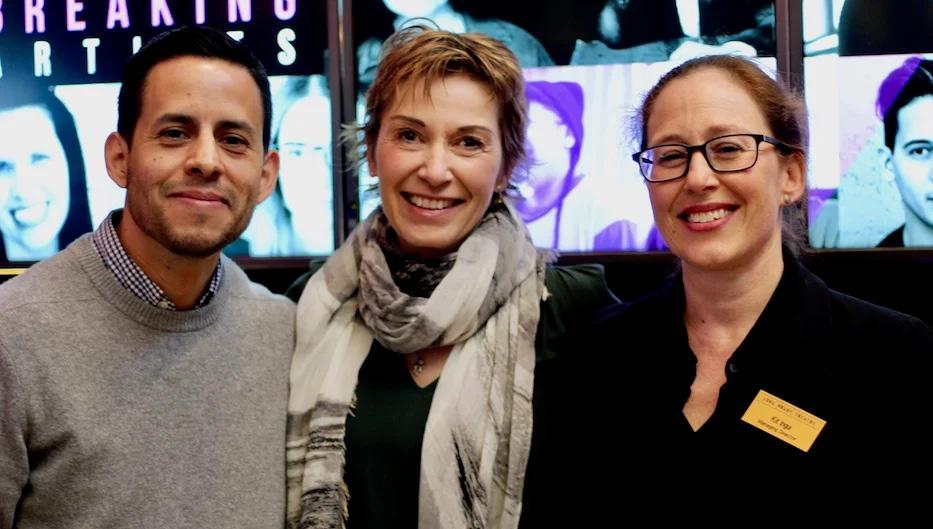


rations, including with the National Asian American Theatre Company (NAATCO), Alliance Theatre in Atlanta and Baltimore Center Stage, and True Colors Theatre Company. But in the midst of it, he and Ingui found themselves pivoting again, this time as the theater announced that it would be moving away from its longtime home on Sargent Drive and into itineran-cy.
The reaction from the community was immediate, with both cautious opti-mism and an outpouring of “anger, fear, confusion and sadness,” Padrón remembered in a text message Wednesday. “We tried our best to hold all of that with care,” with a series of town hall meetings that were both virtual and in-person. The theater also planned a long, intentional goodbye to the space, complete with a community performance and final staged read-ing that closed the space.
“I think audiences couldn’t imagine a LWT without our physical home at Sargent Drive,” Padrón said. “But the history, the spirit, and ‘bones’ of that theater have always been with us and will remain with us. I think at first the new model was an abstract idea, but over the last four years we’ve been able to demonstrate that powerful, once-in-a-lifetime theatre could be made in different spaces all across our great city.”
“And what better city to innovate in than New Haven,” he continued. “I hope our work has become a ‘lighthouse’ for the larger American theatre. I hope artists and organizations across the country, and around the world, look to LWT for artistic inspiration. Maybe more theaters will produce A View From The Bridge in a boathouse overlooking the water.”
In fact, he added, he is most proud of some of the partnerships that have come out of that move, from Collective Consciousness Theatre to Puerto Ricans United, Inc. to the LAB at ConnCORP, where Long Wharf recent-ly transformed a gymnasium for Padrón’s adaptation of She Loves Me last year.
Since the theater first adapted to its new model, Long Wharf has produced works at the Space Ballroom, in people’s homes, at Bregamos Community Theater, at the Canal Dock Boathouse, and at Southern Connecticut State University, as well as the Yale Schwarzman Center.
Those collaborations have brought in new voices not just onstage, but also off. According to a press release sent out Thursday, “two-thirds of Long Wharf Theatre's overall audience were first-time attendees, a 44 percent in-crease in new patrons year over year.”
“Partnership is the way of the future!” Padrón said via text, adding that he’s tried hard to make the theater into “more of a ‘home’ for local artists” like Terrence Riggins and Cheyenne Barboza. Earlier this year, that vision came to life at the Off Broadway Theater downtown, as Riggins opened his one-man play, Unbecoming Tragedy: A Ritual Journey Towards Destiny, to a full house. Barboza, who
Don’t wait if you’re struggling with energy bills. We can help.

Many families are struggling to afford the essentials right now. If you’re looking for ways to lower your energy bills, talk to us. We’ve got solutions to help.
• Payment plans and special rates to help you manage today’s bills.
• No-cost programs like Home Energy Solutions, to manage your energy use and improve comfort.
• Ask us about My Account and our Energy Analyzer tool.
If you rent, if you own your home, or if you’re a property owner whose tenants are experiencing economic hardship, let us help. Home Energy Solutions offers no-cost solutions for income-qualified customers. Call 877.WISE.USE or go to SmartEnergySavings.net


by FATIMA EL-TAYEB,
Fascist regimes from Mussolini to Modi follow a simple playbook: they attack and destabilize the judiciary, the media and the educational system, three of the core pillars of society. They claim to be above the law, arrest judges, ignore and then abolish laws meant to protect democracy. They intim-idate, censor and shut down news outlets. They demonize teachers and student activists, paint uni-versities as hotbeds of leftist culture wars and gain control over curricula.
The result is called, in German, “Gleichschaltung,” meaning there is no space left where one could legally and safely criticize the government. But before Gleichschaltung comes anticipatory obedi-ence. Whether the motive is opportunism or the hope to protect many by sacrificing a few, the re-sult, invariably, is the erosion of democracy.
A good part of the world is moving rapidly in this direction, the U.S. included. It is high time to turn the tide.
As a historian of modern Europe, I know that appeasement has never stopped fascism. Fascists have no interest in meeting in the middle. Every concession made moves them closer to power.
Yet appeasement is the overwhelming response chosen by both the mainstream media and univer-sity administrations. It has not slowed down anything but the collapse of the values we are suppos-edly committed to.
Columbia’s decision to cave to blackmail — by agreeing, among other things, to hand over to the government information about disciplinary actions against student visa holders — did not end at-tacks on academic freedom. Instead, it paved the way for the University of California, Berkeley, to voluntarily hand over names of students, faculty and staff accused of Title VI violations before any inquiry has taken place. The University of Pennsylvania’s choice to exchange withheld fund-ing for the protection of transgender students made it easier for Yale New Haven Hospital to quiet-ly end gender-affirming care for people younger than nineteen. There is no neutrality in this situation. Academics self-critically admitting to a lack of “viewpoint diversity” are not helping to save themselves or their institutions; they are helping to destroy them. Racism, censorship and anti-sci-
ence bias are not viewpoints; they are key ingredients of fascism.
Most authoritarian regimes want their populace fearful and quiet. Fascism wants it fearful and an-gry. As a fundamentally modern movement, fascists use mass media to provoke mass anger that then can be turned into mass action. You could call them the original rage-baiters. The targets for this rage invariably are already marginalized groups within society — Jews, Muslims, transgender people, immigrants. They are framed as mortal threats to the very survival of the nation. They are accused of having disproportionate influence over the media, the law and education.
When DEI is considered racist identity politics but white supremacy is not, we have conceded terri-tory to the extreme right that we should be defending with everything we have. The more fascist moves are rationalized by their opponents as “playing politics the right way,” the more the limits of what is possible are pushed towards violence.
There are small but hopeful signs of a turning tide, from Harvard to the University of California.
Yale should add its weight to this effort. Defending everyone’s right to speak truth to power with-out fear of persecution should be the common ground we stand on — as it was 55 years ago when Yale found itself at the center of an equally tense political moment — the New Haven Black Pan-ther trials.
The trials stemmed from the May 1969 killing of Alex Rackley, a 19-yearold Black Panther sus-pected of being an informant. Nine members of the Black Panther Party, including national chair-man Bobby Seale and founder of the New Haven chapter Ericka Huggins, were indicted for their alleged involvement in Rackley’s murder. The trials became a national flashpoint and brought thou-sands of demonstrators to New Haven in May 1970 to protest political repression and the systemic targeting of the Panthers by the FBI’s COINTELPRO program.
Yale students and many faculty supported the local organizers of the May Day protest. However what sets May 1970 sharply apart from our current moment is the response of the university ad-ministration: it agreed to open Yale to thousands of rally participants, many of whom were housed in college dorms, which also organized childcare, staged teach-ins, and provided food.
Driving this rare show of solidarity with the New Haven community was Yale’s Black Student Alliance, but the administration’s stand was another decisive factor: rather than calling in police and closing its gates as Harvard had done a few weeks earlier, Yale chose the opposite approach. Then president Kingman Brewster acknowledged the
concerns of the rally organizers and their support-ers: “I am appalled and ashamed that things should have to come to such a pass that I am skeptical of the ability of Black revolutionaries to achieve a fair trial anywhere in the United States.”
A majority of students and faculty supported Brewster’s decision to engage with rather than sup-press the protests, but many alumni and US vice president Spiro Agnew sharply criticized him. Nonetheless, while he was a proponent of institutional neutrality – the belief that universities should largely stay silent on political matters - in this moment of national crisis, Brewster chose to affirm Yale’s responsibility to its students, the New Haven community and society as whole. “On the fundamental matter of the fact and feeling of justice in our own community,” Brewster wrote, “Yale cannot be neutral.”
The situation we find ourselves in today poses a threat to the survival of our democracy that is as serious, if not more so. The US government kidnaps people because they are poor and brown or Black, sends the national guard to Black-led cities, criminalizes dissent, and forces the whitewashing of history –these are fundamental matters of justice and as much Yale’s concern as they were in 1970. University administrations are wrong in thinking that making “reasonable” concessions to a movement that is not reasonable will slow down its radicalization. What we see instead is the opposite: the willingness to concede to unreasonable demands lowers the bar for what is considered acceptable. Speaking out is becoming more costly by the day and there are many reasons to remain silent. But we should not kid ourselves that this silence equals neutrality. I was born and raised in Germany. I’ve never forgotten something I read as a high school student: as soon as the Nazis gained power in January 1933, many schools started to expel Jewish students. There was no mandate yet to do so, but it was in keeping with the spirit of the times. It was being on the safe side. This kind of anticipatory obedience was made possible by those who chose to remain silent, to let it happen while reassuring one another and the public that it surely wouldn’t get worse, that the new system would collapse by itself, that the best one could do was to keep one’s head down and stay quiet. With the luxury of hindsight, we should know that it is not the new moral order that is de-stroyed by this strategy; it is our own.
FATIMA EL-TAYEB is a professor of Ethnicity, Race and Migration and Women’s, Gender and Sexuality Studies at Yale and a Public Voices Fellow of The OpEd Project in partnership with Yale University. She can be reached at fatima.el-tayeb@yale.edu. An earlier version of this piece ap-peared in the Yale Daily News
by Maya McFadden
In a dual-language classroom where “bienvenidos” and “welcome” share equal space, first graders did more than just listen to the story of Isabel and Her Colores Go to School — they saw a fellow young learner mesh the two worlds of English and Spanish just as they do daily.
That was the scene at John C. Daniels School in the Hill Tuesday morning as a dozen guests visit-ed the PreK-8 school to spend an hour reading to students for its annual Hispanic Heritage Month Read Aloud Day.
The group of visitors included the superintendent and school district leaders, Daniels parents, neighborhood faith leaders, city alders, and police. John C. Daniels national honor students helped guide guests through the school building Tuesday and provide them with Spanish and English books to read. Honor Society President Zelig Dawson and Vice President Ethan Ranalli said they enjoyed showing their school off to guests and were excited that so many took time away from their work to connect with students.
That rang especially true for seventh grader Valeria Caraballo, who was in her school’s library when her church pastor

walked in. “It feels weird but cool that they care about my school,” she said.
After guests gathered in the library for thanks from Daniels Principal Yesenia Perez and Dual Lan-guage coach Viviana Ortiz, students escorted each of them to their respective classrooms to read and talk with students. Seventh grader Aniya McCray introduced herself to the Uni-


versity of Con-necticut’s (UConn new director of the Puerto Rican/Latin American Cultural Center (PRLACC), Alfred Guante.
Guante is a New Haven native who returned to the city Tuesday to read aloud to a first grade class. Guante moved to New Haven from New York when he was around 5 years old and attended New Ha-

ven Public Schools for grades K-12, ultimately graduating from Hillhouse High School. He stepped into his new role at UConn in July.
Once he arrived at Daniels bilingual teacher Natividad Mendez’s first grade classroom, Guante was greeted by students with a loud and proud “Bienvenido!”
Two first grade classes had joined in Mendez’s classroom, so that a total of 45 students listened to Guante. Before diving into Tuesday’s book, Isabel and Her Colores Go to School, students asked Guante their questions: Does he play UConn football? Had he ever met any of their parents who attended UConn? Who is his boss?
Students finally listened Tuesday as Guante read to them about Isabel’s first day at a new school with teachers and students who only spoke English, while she mostly spoke Spanish.
The students’ worlds meshed with Isabel’s, who spoke about not always understanding what those around her were saying. Mendez’s first-grade class is part of Daniels’ dual-language program-ming, meaning the class is made up of students who mostly speak either Spanish or English. The school’s program helps students learn both by immersing them in
core classes that for the first few hours of the day are in Spanish and in the second half of the day are in English.
This year, Daniels added PreK to its dual-language programming after previously offering the pro-gram to only kindergarten through sixth grade.
As Guante answered students’ questions after the reading, some students asked questions in Span-ish while others asked in English.
First grader Zina asked, “Why was Isabel nervous?” Guante answered that she was in a new envi-ronment and being introduced to a new language.
When Mendez asked Guante where his family is from, he said the Dominican Republic. She then went on to ask the students how many of their families also were from the Dominican Republic. Nearly a dozen students raised their hands, including Mendez.
Mendez taught English in the Dominican Republic for 12 years. She moved to Connecticut four years ago to teach Spanish in New Haven.
Both Guante and Mendez agreed that it matters a lot for students, educators, and families to see their culture represented in the classroom because it “makes you feel
Con’t on page 11



by Jamil Ragland
HARTFORD, CT — A diverse coalition of unions, advocates, and legislators called on Gov. Ned Lamont and the General Assembly to go into special session in order to blunt the impact of federal funding cuts on social safety net programs.
Connecticut For All (CTFA), a statewide coalition of more than 60 community, faith, labor, and nonprofit advocacy organizations, gathered supporters Wednesday morning at the Legislative Of-fice Building to ask political leaders to use some of the state’s nearly $2 billion surplus to shore up federal cuts to food assistance, Medicaid, and other programs upon which hundreds of thousands of state residents rely.
State leaders are under a deadline to make any allocations by November 1, otherwise the surplus will be applied to the state’s pension debt payments.
“We are here today with an urgent demand for our elected officials,” said Leslie Blatteau, CTFA’s Steering Committee chair and also president of the New Haven Federation of Teachers, AFT CT Local 933. “Again, at a time when the federal government is abandoning its responsibility to pro-tect and support working

Wednesday, Oct. 1, 2025, at
make use of the
people in this country, it’s time for Connecticut to invest in working peo-ple, not in Wall Street.”
Sen. Matt Lesser, D-Middletown, called HR 1, otherwise known as the “Big Beau-
tiful Bill” that introduced the various cuts to federal programs, an “abomination.”
He said the new reductions and restrictions to the Supplemental Nutrition Assistance Program (SNAP), which begin
today, will lead to 42,000 residents losing their food benefits, including citizens, lawful residents, and immi-grants who qualify due to their status as survivors of human trafficking, domestic violence, refu-gees, and asylum seekers.
“That is going to devastate the whole state,” Lesser said. “That is about $8 million of benefits a month that people are going to lose for those 42,000 people. But it is particularly concerning for low-income communities around the state, because when you lose SNAP benefits in your neigh-borhood, the people who are losing out aren’t just the recipients themselves and their families. It’s also every neighborhood grocery store, and we already have food deserts in this state, in communi-ties across the state, and we’re going to see a lot more hunger.”
Rob Baril, president of SEIU 1199 NE, which covers healthcare workers in Connecticut and Rhode Island, said that the political leadership of the state has the opportunity to address long-term structural gaps in the social safety net. He said that politicians often say that raising taxes is diffi-cult, but that the workers he represents can talk about difficult circumstances at length.
In a statement, Republican House Leader Vincent Candelora, R-North Branford, characterized the news conference as a “stunning level of public deception,” saying that Democratic complaints about unaffordability are a “calculated dishonesty” since the party controls policies, taxes, and fees at the state level.
“Democrats claim this money belongs to the people, yet they want to funnel it into growing gov-ernment instead of returning it to taxpayers. If they insist on taking it — and it’s increasingly clear they will — it should go toward a purpose with real impact, such as providing much-needed mu-nicipal and state tax relief to over-burdened Connecticut residents, not expanding programs the residents of this state can’t afford.”
“Difficult looks like, ‘I work 80 hours a week, or 90 hours a week, or 110 hours a week,’” Baril said. “Difficult looks like people showing up to their jobs during the COVID years, day after day, week after week, month after month, sick themselves, family members sick, people in their facili-ties sick, holding the hands of the dying, doing it for pennies on the dollar. That’s what real cour-age looks like. It doesn’t require anybody in the legislature or in the governor’s office to have to make those types of sacrifices. It just takes the political courage to do the right thing.”
by Karla Ciaglo
According to Connecticut’s Maternal Mortality Review Committee, nine out of ten pregnancy-related deaths between 2015 and 2020 were preventable. That finding is at the center of a new statewide initiative that equips postpartum patients with bright orange silicone bracelets stamped “I Gave Birth” to help clinicians and first responders recognize complications quickly.
The bracelets are distributed at discharge from birthing hospitals and are meant to be worn for 12 weeks postpartum — the period the state review committee identified as the highest risk window. During the 2015–20 review period, Connecticut averaged 15.6 pregnancy-related deaths for every 100,000 live births, with more than half occurring after delivery. Mental health conditions, includ-ing depression, anxiety, substance use, and perinatal psychosis, were the leading cause of death. National data show the same patterns. In 2023, the U.S. maternal mortality rate was 18.6 deaths per 100,000 live births, but the rate for Black women was 50.3, nearly three times that of white women. Connecticut’s review committee has found similar disparities, with Black mothers consistently overrepresented in maternal deaths.
Public Health Commissioner Manisha Juthani said the bracelet is meant to help close a recognition gap after discharge.
“A woman’s body undergoes tremendous changes during pregnancy and childbirth, and proper healing takes time,” she said. “Complications like infections, excessive

bleeding, blood clots, or problems with cesarean section wounds can be serious.
Wearing these bracelets will tell emergency responders and healthcare workers to look out for urgent maternal warning signs.”.
The initiative grew out of pilot programs at Hartford HealthCare and Trinity Health of New Eng-land, which had each begun testing bracelet programs separately. Similar efforts had already been underway in
other states.
In Alabama, a 2024 pilot distributed bracelets reading “I Just Delivered” with the goal of reducing readmissions. In Illinois, hospitals have used orange bracelets together with EMS and emergency department training. In Connecticut, the Connecticut Hospital Association and the Connecticut Per-inatal Quality Collaborative moved to unify the model so that all hospitals used the same color, and mes-
sage, not just statewide, but nationally.
Kelly Reddington of Hartford HealthCare, who helped launch the pilot, said the bracelets are as much about advocacy as clinical care.
“It empowers patients to say, ‘I just gave birth, take this seriously,’” she said .
Connecticut expanded HUSKY Medicaid coverage to 12 months postpartum in 2022, ensuring mothers retain insurance coverage well beyond the traditional six-
week checkup. Hospital leaders say the bracelet initiative builds on that policy and is connected to a broader maternal health strategy adopted by CHA. That strategy includes four areas of focus: addressing social drivers such as rac-ism and economic inequality, expanding access to perinatal mental health services, ensuring that patients have a voice in their care, and improving data collection to monitor whether interventions are reducing deaths and disparities .
The emphasis on patient voice is reflected in Reddington’s description of the bracelet as a tool for empowerment. The focus on mental health links to MMRC findings that psychiatric conditions are now the leading cause of maternal death in Connecticut, with suicide and overdose accounting for up to 20 percent of pregnancy-associated deaths nationally . Advocates and CHA leaders have said the program will only succeed if bracelets are recognized not just in emergency departments but in community settings, and if referrals lead to timely care.
Hospital officials also stress the need for data. They have said outcomes would be tracked by race, geography, and insurance status to evaluate whether the bracelets are reducing preventable deaths or leaving gaps unaddressed .
“When a postpartum patient wearing (a bracelet) shows up in the emergency department or even experiences a medical event in the grocery store, responders know to ask the right questions,” Jackson said. “Recognizing urgent maternal warning signs quickly means the patient gets help fast-er.”
Board of Education student representative Abdellah Aly was a classmate of Kaiden’s at Career. In a separate interview with the Independent, he said that he did not know Kaiden, but saw him around school “engaged, and pretty much happy with his surrounding/friend group.” Aly recalled returning to school last Monday, two days after Kaiden was killed. He described go-ing back to school after Kaiden’s homicide as “the most depressing day that even I have ever seen.”
He continued, “Many students could not hold it in after they found out, many wanted to leave and vent. Some huddled with each other grieving the unfortunate loss that has been endured. So far, Career and Edgewood from what I heard so far was hit the most. I came down to help support the students, faculty came to help, counselors tried to help too. Top officials, officers, and a support dog came as well. Our security was very much heightened that day (Monday). Teachers were also hit badly, they grieved for Kaiden. What has occurred should have never happened, I am not sure how everything was caused. So, in conclusion, it was a very, grieving and depressing day at our schools.”
by Donald Eng
HARTFORD, CT — The federal government shutdown that began just after midnight Wednesday morning could have wide-ranging and long-lasting effects on the state, according to Gov. Ned La-mont.
Speaking at a media briefing Wednesday, Lamont lamented the inability of Congress to pass a budget.
“These guys in Washington have got to get their act together,” Lamont said.
Lamont cited the Republican control of the White House and both houses of Congress, adding that he stood with Connecticut’s Congressional delegation in tying provisions of the Affordable Care Act to the budget negotiations.
But he also took a less hardline stance than Connecticut’s federal legislators.
“It’s surprising to me that they can’t figure this out,” he said. “Seems to me there’s a deal to be had there.”
In the short term, Lamont said the Connecticut WIC (women, infants, children) program, which provides food for an estimated 50,000 mothers, infants, and young children at a cost of about $200,000 each day, was the most immediate concern. The state has sufficient reserve funds to con-tinue that program for a while, he said.
“We want moms and young families to know that their WIC card will be good

for the foreseeable future,” he said. Another food benefit, the Supplemental Nutrition Assistance Program (SNAP), is more costly, Lamont said. That program is funded through the end of October, he said.
“It’s pretty costly, at about $72 million a month, and it takes care of hundreds of thousands (of people),” Lamont said. He added that the number of people depending on the program would likely rise if the shutdown dragged on and workers began
getting furloughed from their jobs.
Connecticut also has recently upped its annual contribution to Connecticut Foodshare, from $850,000 to nearly $3 million, in response to federal cutbacks in food supplies.
Other state funding priorities include the Department of Education, which has about 90 days worth of operating funds, and the Low Income Home Energy Assistance Program (LIHEAP), which Lamont said should be stable through October.
Medicaid also has funding through the first three months of 2026, he said.
On the Republican side, House Minority Leader Vincent Candelora of North Branford, said he hoped the shutdown would be short and end with a negotiated deal. “Here in Connecticut, Republicans and Democrats came together in 2017 to resolve our biggest budgetary crisis, creating the fiscal guardrails that have enabled us to build savings and tackle our pension debt,” he said. “Our leaders in D.C. could learn from what we accomplished.”
Candelora said he was concerned Lamont and the legislative Democrats were exploiting the shut-down to increase state spending above what was approved during the recent budget cycle.
“Now the governor faces a critical test: will he protect what little remains of Connecticut’s fiscal discipline, or cave to political pressure from his own party?” Candelora said.
Lamont said calling the state legislature into special session was a possibility. He also could use the state’s reserves, also known as the Rainy Day Fund, for critical programs. He said Connecticut was better prepared to weather the shutdown than many other states with smaller or no reserve funds.
“I’m glad I’ve got $4 billion to make sure I won’t have to jack up your taxes or cut your education funding,” he said.

Lucy Gellman & Abiba Biao
In Quartez Harris and Amelia Sherwood’s hands, a young James Baldwin was coming back to life. On the page, he cradled a stack of three books, the spines thick and bright. A palm, fingers outstretched, reached for a hardcover from the shelf. Around him, the whole library felt like it was singing.
From one side of the room, a voice piped up, its pint-sized owner studying the scene intently. “Look!” she insisted. It was high, gentle, certain. For just a split second, it seemed like Baldwin was right there in the room, beaming back at her.
That vibrancy flooded the Connecticut Center for Arts & Technology (ConnCAT) on Saturday, as the sixth annual Kulturally LIT Fest (formerly Elm City LIT Fest) returned to Science Park to cele-brate the “Year of X.” Curated by Kulturally LIT’s powerhouse team, the day-long celebration in-cluded panels, author talks, live performances, and an announcement of the city’s second-ever poet laureate.
That honor now belongs to poet Yexandra Diaz; Wilbur Cross High School student Henry Mead was named inaugural Youth Poet Laureate. This year, the day’s programming also centered the legacies of Malcolm X and Medgar Evers, both of whom were assassinated for their commitment to civil rights work before their 40th birthdays.
A “Year of X” book club, held the third Thursday of each month at Possible Futures, continues through the end of the year. “I feel grateful,” said LIT Fest Founder and Director IfeMichelle Gardin, who has grown the festi-val from a small book club in a police substation to a year-long event fêting literature of the Black diaspora.
Last year, amidst centennial celebrations of James Baldwin, she picked the theme after observing Evers’ birthday on July 2. “I started thinking that in this coming year, people really need to know the significance of their work.”
And throughout the day, they did, learning right alongside Gardin and the dozens of academics, authors, musicians and wordsmiths she had gathered at 4 Science Park beneath the LIT Fest um-brella. As artists prepared a number of crafts for kids upstairs, Harris took a seat with Sankofa Learning Center’s Amelia Allen Sherwood, a copy of his book Go Tell It: How James Baldwin Became A Writer between them. Published in January of this year, Go Tell It follows the story of Baldwin not as an adult, essayist, sharp-tongued expat or deep, prolific thinker and writer, but as a boy, during the period that he preached whole sermons from a Pentecostal storefront church, fell in love with books and film, and helped raise his eight brothers and sisters (Harris, at one point, described the writer with a diaper in one hand and a book in the other).
“His principles were love,” Harris said. “If you read Baldwin, it really is a love letter.”
He turned the clock back to Baldwin’s early years at PS 24, where the then-young writer was read-ing Charles Dickens and writing about the Spanish Revolutionary War by the time he was 14. It would still be eight years until he published a book re-
view in The Nation, and 10 until his story
“Previous Condition” became the first in a prolific and impassioned career. It would be decades until Baldwin moved to St. Paulde-Vence, France, where he spent the last 17 years of his life.
Decades later, Harris and his wife, the poet Kortney Morrow, would travel to France for the cen-tennial of Baldwin’s birth, and see the remains of the places that he called home. Harris was so overwhelmed with the significance of the trip that he spent days “crying like a baby,” he remem-bered to laughs.
But here, in these pages, Baldwin was simply a kid, learning to love the written word. In the ocean of work about Baldwin, Harris explained, it was a single place where young people—in part thanks to illustrator Gordon C James, who Harris has long revered as an educator himself—could see themselves.
“Why was it important to amplify his story as a boy?” Sherwood asked, remembering a conversa-tion she had with one of her sons about the book.
Harris didn’t hesitate. For one thing, he said, Baldwin loved children—not just his siblings or family members, but all children. He believed, strongly and through his life, that adults had a moral obligation to protect them, whether they were bound by blood or simply by the human condition. He had that same deep care and reverence for books, through which he was able to escape from the confines of poverty in Harlem.
“Books were his safe haven,” Harris said. “If you think about it, he became a book. He became many books. When I see a boy reading, I think, ‘That’s Baldwin.’”
“I’m always thinking about the power that words possess,” he added a moment later. “I just see the world changing when I see a kid reading.”
It’s also carrying on a revolutionary legacy, he added. After a request from his nephew Tejan, who went by TJ, Baldwin wrote a children’s book titled Little Man Little Man, which he published in 1976. Yoran Cazac, a French painter with whom Baldwin was close, did the illustrations. But the book, which includes an acknowledgement of racism, police violence, and poverty, went out of print almost as quickly as it had appeared.
“He felt like that book was critical to protecting the self-esteem of Black children,” Harris said. Now, Harris feels like he’s filling a void. That he got to collaborate with James, a favorite illustra-tor among Harris’ young students in the Cleveland Metropolitan School District, made the experi-ence feel all the more special. He added that after the book came out, he had the chance to meet Baldwin's sister, Paula, after a reading and visit to her church.
In the audience, attendees murmured in delight. Lifting her phone to record, educator Alicia Tyson-Sherwood praised Harris’ work, which makes the story of Baldwin more accessible. When Harris described his next book project, a middle-grade story “about a kid like me, a kid with an IEP,” she smiled excitedly.
“Reading opens every single door,” she said.



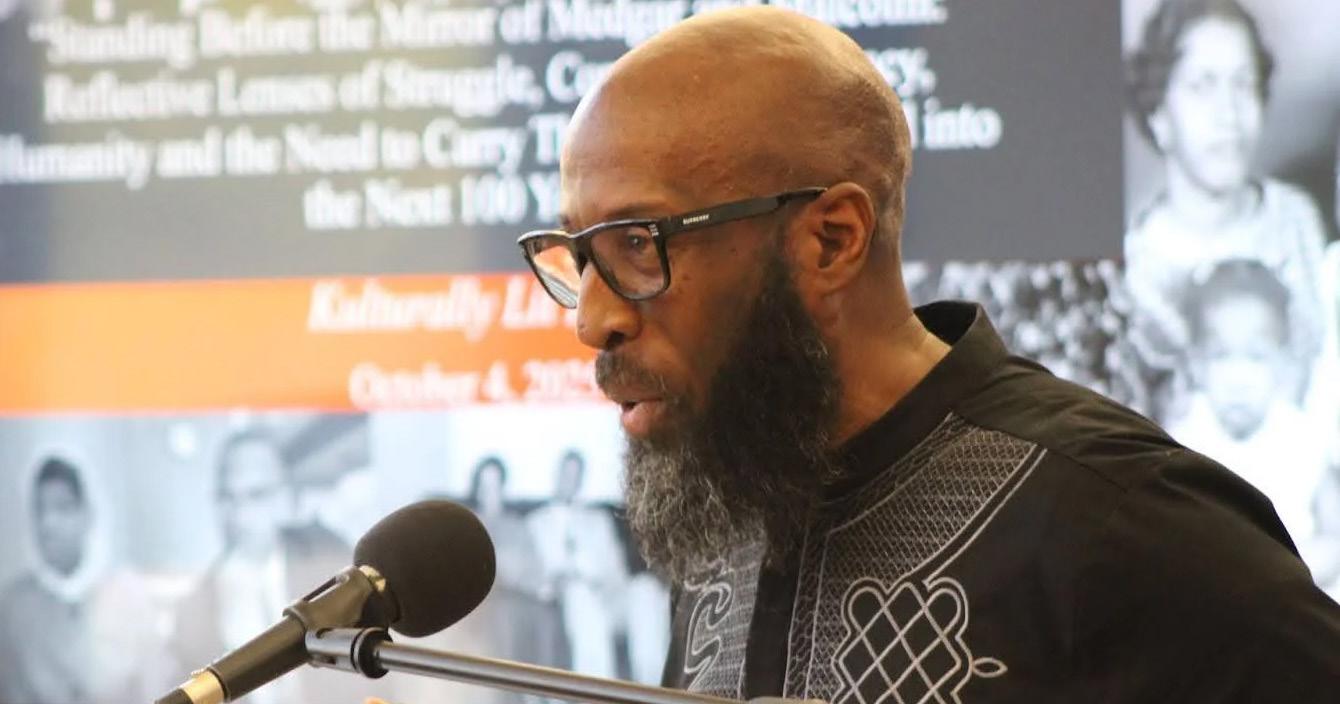
Prose Party In The Parking Lot Outside, LIT Fest kept that momentum going, from bookstore vendors, zine artists and food truck owners to live performers who made the stage their own. As the musician Stout took the mic to cheers, LIT Fest novice and author Kris Allen invited attendees over to her booth, where her books sought to “bring people closer to their faith in God,” she said. A few yards away, bookseller Char-lene Snipes-Walker welcomed people into a pop-up version of Spanish Moss Books, so named for her South Carolinian roots.
While Snipes-Walker now lives in Connecticut, she grew up in the South, building a collection of used books that centered Black characters, Caribbean characters, and protagonists of color. At some point, she realized that she had enough books for a business. So when she saw a notice for LIT Fest, it was a no-brainer. Around her, titles like Zadie Smith’s Feel Free, Eleanor Shearer’s River Sing Me Home and Zora Neale Hurston’s Barracoon beckoned. Back on stage, Stout put a soulful, jazzand gospel-flecked spin on James Brown’s “I Feel Good,” bouncing between the lyrics as she layered her vocals with a loop pedal. As she sang, she remem-bered driving all the way to New Haven from Washington, D.C., to pay homage to the place where she was born and raised.
“I feel blessed that I was able to make it down the road with y’all and deposit something in your spirit,” she said. “Listen—” she belted the next part “Said I’m grateful! Said I’m gr-aaa-te-ful”
She urged attendees to put down their phones and stop recording, so that they could listen with their full attention. “Just record with your mind,” she said with a smile.
At a nearby display from Possible Futures (which has collaborated with LIT Fest many times over), ConnCAT CEO and President Erik Clemons was mulling over Nicholas Boggs’ Baldwin: A Love Story. He had just finished the book, he explained—Clemons has read most everything by, about, and pertaining to Baldwin—and was looking for something new to read. Anderson placed a copy of Go Tell It snugly in his hands. It wasn’t an academic tome—but it was a refreshing and tender look at the artist.
“It feels incredible!" Clemons said of LIT Fest’s growth, which for two years has taken place at ConnCAT’s 4 Science Park home. With a smile, he remembered the first time Gardin came to him with an idea for a Black book festival. Even then, she was prepared with a PowerPoint presenta-tion.”She really walked me through it,” he remembered.
But that was 2019, and Covid-19 had other plans. Months later, LIT Fest went remote and held Black book clubs that connected the community during lockdown. Then it was outdoors, behind the former Dixwell Plaza. Then it jumped to the Stetson Branch Library, while also growing its footprint. Only last fall did it at last come to ConnCAT, to celebrate the legacy of James Baldwin.
“The growth of the festival is an indication of the growth of her [Gardin’s] ideas,” Clemons said. “All the people colliding here is the manifestation of LIT Fest’s mis-
by Thomas Breen
Masked revelers raised $32,500 to help keep Dixwell’s community center alive and thriving, at a Q House “fall ball” that also honored city public school leaders.
That ball took place at the Q House at 197 Dixwell Ave. on Sept. 19. The event had a “masquerade theme” that, according to promotional material for the ball, sought to blend “elegance with pur-pose.”
Jeanette Morrison, a long-time Dixwell alder and chair of the Q House Advisory Board, said that roughly 150 people turned out to celebrate the revived community center and to fête honorees Ker-mit Carolina, Sondi Jackson, David Diah, and the late Dr. Fred Smith, aka Mr. Freddy Fixer.
“The honorees represent members of the New Haven Public Schools and the relationship be-tween education and community and its success,” Morrison told the Independent.
She said this first annual Q House Fall Ball harkens back to similar events that a previous version of the Q House used to hold in the 1970s and 1980s. Morrison said that a total of $32,500 was raised to support the Q House’s endowment fund.
“In 1924, the Dixwell Q House first opened its doors as a settlement house, providing a vital space of refuge, connection, and advancement for African American families arriving in New Haven dur-ing the Great Migration,” reads a sponsorship proposal for the Sept. 19 ball. “One hundred and one years later, the Q House continues to serve as a vibrant and essential hub in the Dixwell and Newhallville neighborhoods.
“Throughout the decades, the Q House has grown to become a center for youth empowerment, family wellness, cultural celebration, and community transformation. With more than 70 classes, workshops, and events offered weekly—serving youth, adults, and seniors—the Q House is a thriving example of community-led strength and care.”
“Hola,” “Hello”
valued,” Mendez said.
She thanked Guante for joining her class Tuesday to show students that “it doesn’t matter where you come from, you can always make dreams come true.”
The first graders sent off Guante with a dance and a special “Wepa” to say, so long.
This is the fourth year Daniels has hosted Hispanic Heritage Read Aloud Day. Ortiz said that it’s important for children to see the community and representations of Hispanic and Latino cultures so that “they can envision for themselves what their futures can be.”
The school plans to also host a Hispanic Champions panel for 6-8th grade students to hear directly from local leaders.
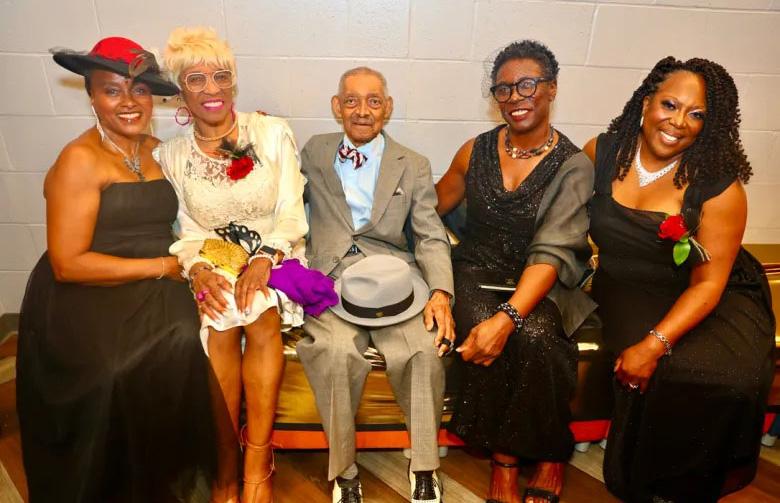
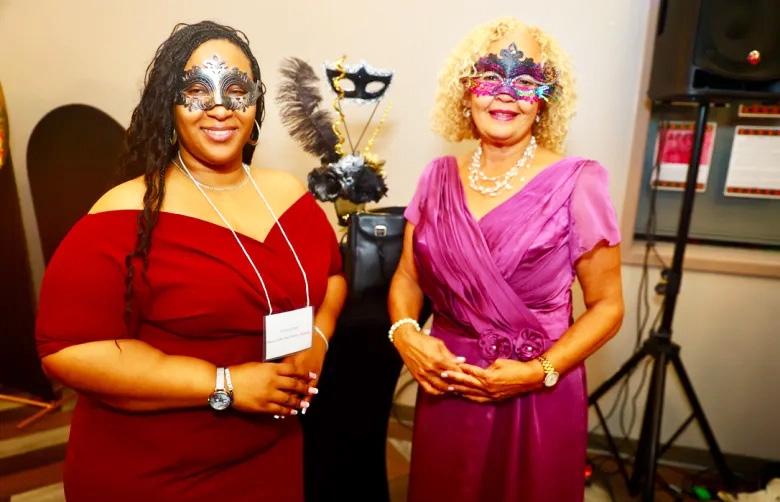






Abiba Biao
To the gentle strum of a guitar, Jacqueline Buster eased into James Taylor’s 1971 “You Can Close Your Eyes,” letting herself feel the lyrics. Moments before, she had looked out into the audience, and asked who among them had lost a loved one. Hundreds of hands went up.
No one would have guessed that she hadn’t performed in 40 years; the sweetness of the melody wrapped the room in its sound. As she finished, she assured the audience that it was safe to rest, mourn those who have passed, and cherish the future memories with family and loved ones.
Joyful, mellow, and sometimes fiery sound filled Toad’s Place on a recent Sunday night, as musi-cians paid tribute to the late guitarist Rohn Lawrence, a pillar of New Haven jazz, R&B, and pop who also traveled the world with his craft. Three years after Lawrence was sent off in song from the Toad’s Place stage, artists returned to remember their friend and colleague, raising funds for the neighborhood hub The Shack in the process.
Located on 333 Valley St. in New Haven’s West Hills neighborhoods, The Shack is a community center that Ward 30 Alder Honda Smith founded in 2021. The space serves teenagers to elders and offers urban farming, music production and composition, media arts classes in journalism and me-dia production, among other activities.
It is also in the process of building out a space for music production in West Hills, an initiative that Smith estimates will cost $200,000. In addition to ticket sales, the concert offered raffle tickets and custom t-shirts and sweatshirts from the New Haven-based brand Deadby5am, the brainchild of creator Brenton Shumaker. Shumaker, who began to sew as a kid, is currently based out of a space at NXTHVN.
“There's no better organization that I

can think of that meshes so well with, you know, who we are,” Buster said of the Shack’s partnership with her organization, Still in the Ville. Around her, the performance featured artists such as Jay Rowe, saxophonist Marion Meadows, and vocalist Porter Carroll, Jr. among others. All of them played with Lawrence; some, like Buster, remained extremely close with him until his death. Throughout the night, both performers and attendees fêted Lawrence, noting how much he would have loved the work that The Shack is doing for young people. During his life, the guitarist was a mentor to dozens, if not hundreds, of up-andcoming New Haven musicians, who have
since gone on to forge artistic and educational careers of their own.
Community booster Veronica Douglas-Givan, who emceed the event, said she could envision Lawrence smiling down on the audience, “saying, ‘Well done. Well done you crazy people!’” For years now, she’s been working to spread the word about The Shack across and beyond New Ha-ven, because she’s so excited about the mission.
It’s about “not just existing in New Haven, but really living in New Haven and putting your dollars in New Haven to let them understand that we care about our young people,” she said.
She explained that her own story fuels
her dedication to the city’s youth. Growing up in Newhall-ville, Douglas-Givan had dreams of becoming a rapper. Then in high school—she attended the now-shuttered Richard C. Lee High—a guidance counselor and journalism teacher pulled her aside and suggested that her gift for writing could take her beyond poetry. She took their advice, pursuing undergraduate and then graduate work at Northeastern University and Quinnipiac University respectively. Now, she’s an Emmy award winner, teaches in the Com-munication, Film and Media Studies Department at the University of New Haven, and is the CEO of her own media company, the Veronica Douglas Media
Agency. It is exactly those same skills she seeks to pass onto the next generation.
“Keep a word in your head, positive words, and a song in your heart and that will get you through a lot of different things,” she said. “Because it was that music, that storytelling that got me through.”
On stage, music bloomed into an homage that was mellifluous and varied enough to reach the heavens. The bongos, cymbals and drums built the foundation before the piano keys sauntered in. It was pa peppy, grooving tune that got people bopping their heads.
As she listened, Buster noted that “there's something different about this year.”
“It's special. There's something different about the energy among the musicians … It's just a differ-ent kind of experience,” she said.
She said that the venue, where Lawrence played a Monday night jazz jam upstairs at Lilly’s Pad for over a decade, embodied the late musician’s carefree, easygoing energy. Her own performance was meant to tap into that spirit, as a warm nod to both Lawrence and to her mother, Jeannette A. Thomas, who passed away last year.
As Taylor’s lyrics filled the space —I don't know no love songs/And I can't sing the blues any-more/But I can sing this song/And you can sing this song when I'm gone—some attendees closed their eyes; others moved to the music.
“I heard this song a few weeks ago. It was in my spirit to do it, for him and for my mom because it just kind of gives you the permission to pass and that it’s going to be ok,” she said. “In Rohn’s case, it’s about carrying on the legacy and knowing that wherever he is it’s going to be ok.”
Bridgeport, CT – October 3, 2025 — Bridgeport Public Schools have worked to find a solution to ensure students and staff have the support and resources they need in the classroom. At the Board of Education meeting on Thursday, October 2, 2025, the Board approved the restoration of kindergarten paraprofessionals across the district. Last spring, the district faced historic budget challenges that forced the elimination of kindergarten paraprofessionals. While this decision was necessary at the time to close a significant funding gap, it was never considered ideal. Since that day, the district has actively explored multiple ways to restore these vital positions. By implementing a plan to reduce the estimated cost of substitute teachers, Bridgeport Public Schools identified a creative solution that makes it possible to return paraprofessionals to kindergarten classrooms.
“Restoring kindergarten paraprofessionals is about doing what is right for our stu-
dents,” said Interim Superintendent Dr. Royce Avery. “We understood the impact of these positions being cut, and we worked to find a solution that would bring them back as quickly as possible. This decision ensures that our youngest learners and their teachers have the support they need in the classroom.”
The restoration of paraprofessionals has been welcomed by educators and leaders across the district.
Jeff Morrissey, President of the Bridgeport Education Association/Teachers Union (BEA), stated:
“The BEA is extremely pleased that the kindergarten paraprofessionals will be return-ing to the classroom. We would like to applaud the efforts of all who have advocated for their return. Our kindergarten teachers have done a phenomenal job in continuing to tirelessly educate their students during this difficult time and should be commended for doing so. This clearly

shows what can be accomplished when we come together.”
Steven Douglas, President of the Bridgeport Council of Administrators and Supervi-sors (BCAS), added:
“As the BCAS president, I am very pleased with the reinstatement of kindergarten paraprofessionals. This decision will provide essential support in our kindergarten classrooms and strengthen opportunities for our youngest learners to be actively en-gaged in the learning process.”
Kindergarten paraprofessionals assist with classroom management and create safe and engaging learning environments. Their restoration reflects the district’s commit-ment to listening to the needs of schools and the community while taking action to strengthen student learning.
Bridgeport Public Schools will begin the rehiring process immediately, with paraprofessionals expected to return to classrooms this school year.
Exhibit highlights African-American history through the Ebony Horsewomen
Jamil Ragland
History is a constant site of struggle, despite our tendency to think of events as set in stone once they’ve occurred. The present has an enormous influence on the past, and the way that we learned history says as much about the time period we were taught in as much as the actual dates of the events.
Patricia Kelly, president, CEO and founder of Ebony Horsewomen, Inc., knows that full well. Her equestrian center in the North End of Hartford hosted the grand opening of the Mary Fields Horse and Heritage Museum on a seasonable and bright Friday afternoon.
Kelly said that she opened the museum because African Americans need to learn their own history with horses.
“This is our legacy,” she said. “We’re not ‘Johnny-come-late’ with the equestrian situation.”
Kelly told me the story of Mary Fields, also known as Stagecoach Mary for her reliability and her preferred method of travel. Born into slavery in Tennessee, Mary gained her freedom after the Civil War. She worked various roles at a Catholic mission in Montana she was living in before becom-ing a star route carrier for the U.S. Postal Service, the first


African American woman to do so.
“Mary was six feet tall, 200 pounds,” she said. “The lady was no joke, but they threw out the con-vent because she drank a lot and she'd shoot you. If you got on her nerves she would shoot you and I guess the Bishop was like, well no we can't have all of that.”
I’d never heard the story of Stagecoach Mary. I’d never heard that 15 of the first 28 Kentucky Derbys were won by African American jockeys, until Jim Crow and racist violence forced them from the sport. I didn’t know that the term “cowboy” is basically a ref-


erence to how Whites called African American male cowherds “boy” as an epithet.
The history of cowboys and horse-riding had been taught to me by old Ronald Reagan movies and more modern films like Tombstone, which completely erased African Americans as cowboys. That’s why the Mary Fields Museum is necessary.
Kelly knows better though. A love of horses runs through her family- her father was a jockey, and her grandparents, who were enslaved, relied on horses, mules and donkeys for their existence both before and after emancipation (note: if anyone tries to tell you that slavery is ancient history, yes,
there are people still alive today only one generation removed from it).
So it’s awesome to see so many African Americans wearing cowboy hats, not as an affectation, but as a real symbol of the lives they lead and the history we come from. Kelly estimates that since she founded Ebony Horsewomen, more than 15,000 children have passed through their various programs to connect them with horses and their heritage.
History is a struggle, and Patricia Kelly wouldn’t have it any other way. “I'm an equestrian. It's my duty before I transition to a higher plane to tell these kids who they are.”
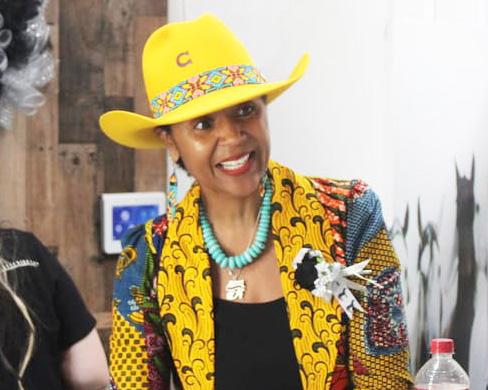

by Laura Glesby
Adam Carmon has cleared a key hurdle in seeking to hold the city and several former detectives accountable for the wrongful conviction that landed him in prison for 28 years.
A federal judge rejected attempts from the city and two of the detectives in question to disqualify Carmon’s lawsuit — finding enough to suggest a “‘widespread pattern’ of fabricating evidence” among New Haven police officers in the 1990s. Judge Janet Hall of the U.S. District Court of Connecticut issued a ruling to that effect on Sept. 18. The city filed a motion for the judge to reconsider, which Carmon’s lawyers challenged in a memo-randum.
As of Monday, the case has been assigned to a settlement conference.
Carmon was convicted of murder in 1995 for a 1994 shooting that killed a seven-month-old baby, Danielle Taft, and paralyzed her grandmother, Charlene Troutman.
Carmon maintained his innocence for nearly three decades in prison, until a state Superior Court Judge Jon Alander overturned his conviction in 2022. Alander cited several pieces of evidence that prosecutors and police withheld from the Carmon’s defense lawyers, as well as new science calling into question the state’s eyewitness and firearm evidence against Carmon.
Carmon is now suing the city for alleged indemnification, municipal liability, and negligence, and he’s suing several detectives associated with his case for allegedly suppressing and fabricating evi-dence, malicious prosecution, filing a warrant affidavit with false information, coercing self-incriminating statements from Carmon, and negligent infliction of emotional distress.
The city along with two of the detectives whom Carmon is suing, James Stephenson and Peter Ca-rusone, requested that Hall issue a “summary judgment” that Carmon didn’t have the legal grounds to sue them — which could have thrown out the case before a trial over the actual facts of the case ensued.
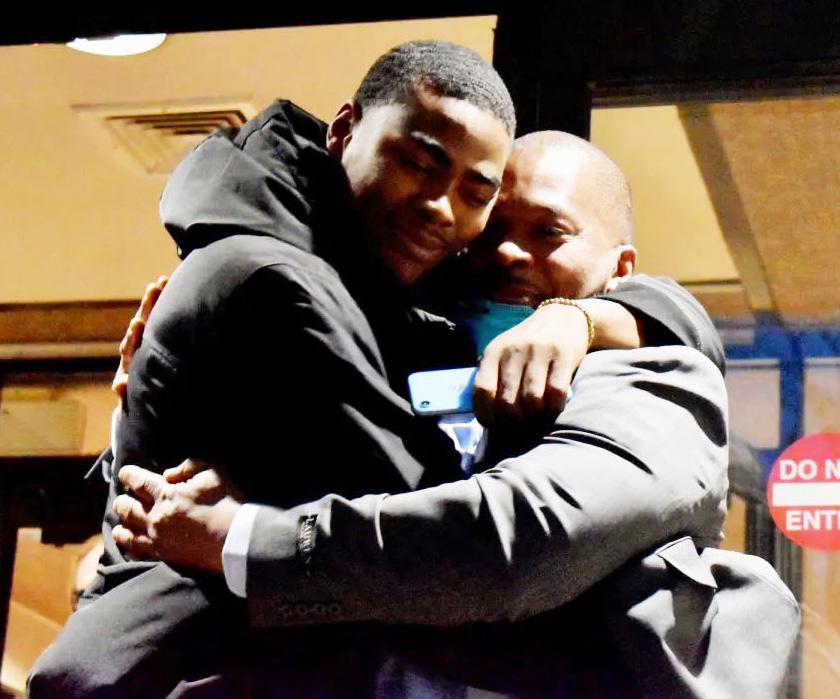
Stephenson and Carusone sought to invoke qualified immunity (among other defenses) to avert the lawsuit — a legal protection for police officers shielding them from liability for actions they’ve taken as part of their official police duty, except in cases where they have violated previ-ously established constitutional rights.
James Stephenson, for example, claimed that qualified immunity protected him from liability for not disclosing documentation of multiple searches in a firearms database that did not yield the mod-el of firearm that Carmon was accused of having used in the shooting. In 2022, Alander deter-mined that those records could have led a jury to question the ballistic evidence against Carmon.
In a February motion for summary judgment against Carmon, Stephenson’s lawyers at the firm Karsten and Tallberg argued that qualified immunity applies to this situation because Stephenson did not consider the results to be part of his disclosure obligations.
The detective’s actions were, the lawyers argued, “objectively reasonable and
consistent with standard practice, and did not violate any clearly established law at the time.” In other words, Ste-phenson was simply doing his job according to the department’s norms and policies.
The city’s lawyers, a team led by Thomas Gerarde, argued in a separate memo in support of their motion for summary judgment that municipalities can’t be held liable for the “criminal, intentional, willful, wanton or malicious acts of its employees,” if such acts are proven to have occurred.
Weighing these competing arguments about who can legally be held accountable for Carmon’s conviction, Judge Hall ruled that Carmon has a right to assert “alternative theories of liability.”
Hall rejected other arguments from the city and former detectives as well, including claims about the application of a statute of limitations on Carmon’s ability to file a lawsuit. She did limit Car-mon’s ability to seek damages from the city in response to “physical harms” due to a procedural issue.
In a statement provided to the Independent for this article, City Corporation
Counsel Patricia King wrote, “Every individual deserves equal and impartial justice under the law. While the City cannot comment on the specifics of this case and the related 1994 incident due to pending litigation, the City is committed to cooperating with all parties and appropriately engaging in the civil litigation process to ensure there are reasonable resolutions on matters where city employees are deemed le-gally responsible for wrongful convictions or miscarriages of justice in the past.”
Mayor Justin Elicker wrote in a statement that he wasn’t mayor at the time of Carmon’s arrest and trial and “can’t personally speak with authority about events that happened in 1994.” Today, in 2025, he wrote that “overwhelmingly, our police officers do an outstanding job” and are held to a “strong code of conduct” with body and dashboard camera policies in place. “The NHPD has clear policies and protocols, conducts regular trainings, utilizes bodycams and dashcams, and has a strong code of conduct that all officers must follow.”
“As Chief Jacobson and I have made clear from day one,” Elicker wrote, “we’re committed to sup-porting our officers and giving them the tools, training and resources they need to succeed – and, at the same time, we also hold our officers accountable and we are transparent with the public. That’s how we will continue to operate and that’s how we build trust with residents and keep our com-munities safe.”
Carmon’s lawyer, Doug Lieb, wrote meanwhile that “Judge Hall’s decision is an important step in achieving justice for Adam Carmon. Our case alleges that the New Haven Police Department’s deep-rooted culture of misconduct helped cause Mr. Carmon’s wrongful conviction. We look for-ward to proving to a jury that the City should be held accountable for it.”
Underlying the legal back-and-forth between the city and Carmon was the question of whether the errors in Carmon’s conviction stemmed from the individual actions of a few detectives — or sys-tem-
atic corruption in the New Haven Police Department during the time of his prosecution.
Carmon is claiming that the police department maintained a “widespread practice” of fabricating evidence, coercing and manipulating witnesses, and deliberately encouraging false confessions — and that city policymakers demonstrated “deliberate indifference” to those actions.
Carmon’s attorneys referenced other overturned or questioned convictions involving allegations of misconduct from New Haven detectives, including some of the same detectives involved in putting Carmon behind bars.
The city argued that some of those convictions have not been legally overturned, and that other al-legations of misconduct should not be generalized. “The conduct of one detective in one instance does not constitute the custom and practice of the NHPD,” the city wrote. “The few incidents cited above do not, as a matter of law, constitute a pervasive practice to violate constitutional rights, so widespread as to have the effect of department policy.”
The city’s lawyers also wrote that the police department has maintained a policy since the 1970s that “mandated all police officers to be truthful, and prohibits fabrication of evidence, or withhold-ing of evidence of any kind.”
In her ruling, Hall sided with Carmon, writing that allegations of police misconduct from Daryl Valentine, Eric Ham, and Stefon Morant, among others, amounted to a track record that “suggests a ‘widespread pattern’ of fabricating evidence.”
“While the evidence reviewed by the court does not directly establish that officials at the highest level of the NHPD supported fabricating evidence,” she wrote, the pattern “would allow a jury to reasonably conclude policymakers constructively condoned such a practice…. The court concludes, therefore, that Mr. Carmon has adduced evidence upon which a reasonable jury could find the City liable for violating Mr. Carmon’s constitutional rights on a theory that the City engaged in a cus-tom, pattern, or practice of falsifying evidence.”
directed that work, will return to Long Wharf this season to direct August Wilson’s Gem of the Ocean in February.
Padrón isn’t going anywhere immediately: he plans to finish out the current season before his formal departure. Meanwhile, other transitions at the theater are also afoot: last month, Long Wharf appointed Meredith Suttles as its next managing director, a position that Eric Gershman held down for several months after Ingui left.
Suttles, who most recently served as an associate consultant with A.D. Hamingson & Associates, praised the work Padrón has done. At A.D. Hamingson & Associates, Suttles spearheaded
advancement for the Wil-liamstown Theatre Festival and long-term planning for Mid Atlantic Arts. Before that, she also worked at organizations including the Marin Theatre Company, TheaterWorksUSA, Soho Repertory Theatre and The Public Theater.
“His ability to innovate while remaining deeply rooted in the values of col-laboration and equity has been truly inspiring,” she said in a press release Thursday.
“As we look ahead, I am excited to build on the strong foundation Jacob has created, ensuring that Long Wharf Theatre continues to thrive, grow and connect with audiences in bold new ways.”
A representative from Berlin Rosen, the

marketing firm with which Long Wharf works, did not respond to a request for more information around the search process that will likely take place next year.
The current season has already begun with a production of Monet Hurst-Mendoza’s Torera, a co-production with the WP Theater, The Sol Project, and Latinx Playwrights Circle running through Oct. 19 at the WP Theater in New York. The New Haven leg of the season begins with an August Wilson Celebration kickoff party at the New Haven Museum in October and Sanaz Toossi’s English in January at Southern Connecticut State University. It continues with Gem of the Ocean in February and March.
As he prepares to leave Long Wharf, Padrón said he also thinks that the fu-ture of American theater—which has stirred up what feels like 100 thought pieces in the past three years—is bright. That is, if actors, directors and ar-tistic leaders pivot with the times, and listen to the needs of their respective communities.
“I think the American theatre is only in a time of crisis if we’re trying to maintain the status quo, but we’re in a time of great possibility if we’re im-agining a new way forward,” he said via text. “And given the state of the world, we need stories right now. We need theatre right now. I think LWT is on the right path.”

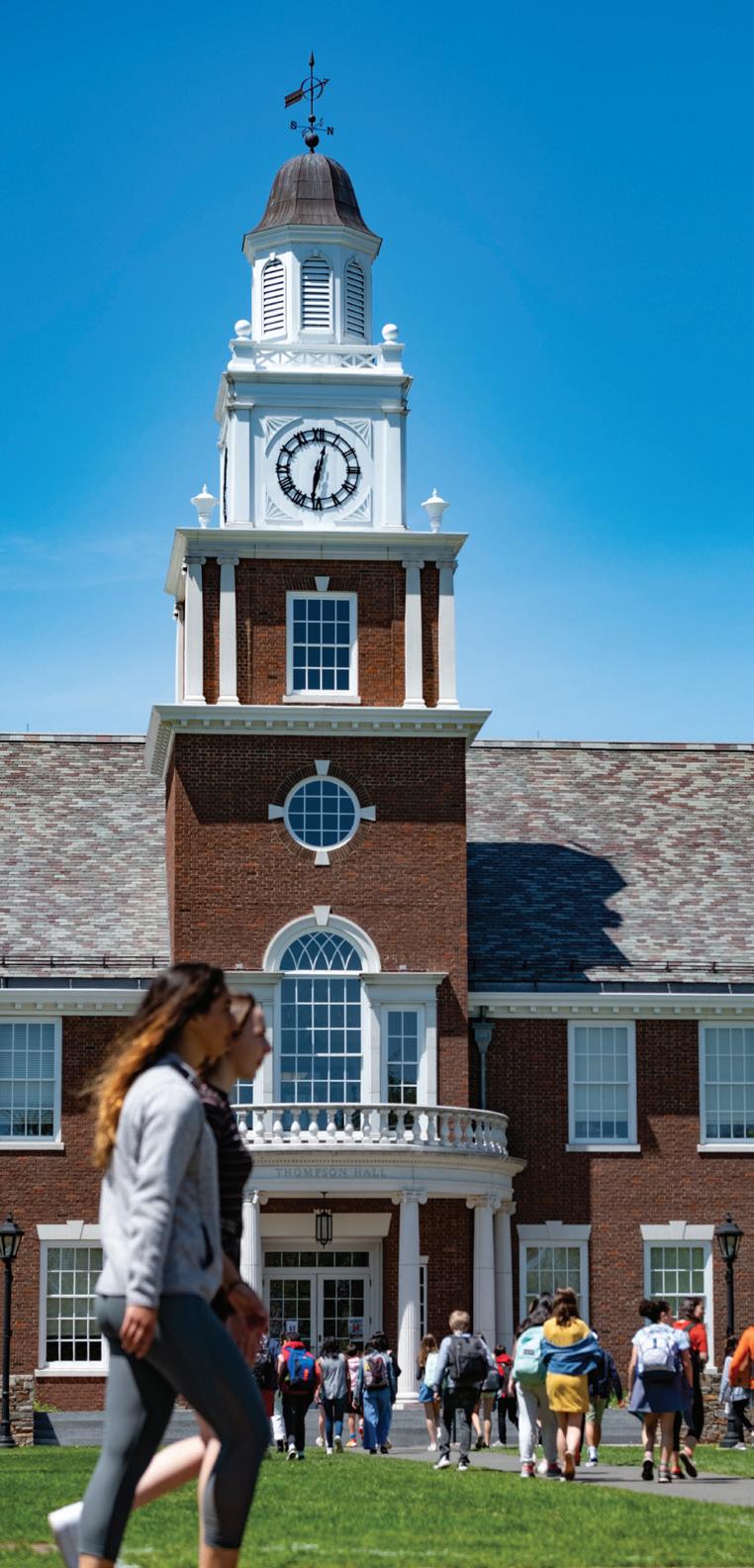

• Cremation (Choose to be cremated at Evergreen.)
• Columbarium in the Most Beautiful Cremation Garden
• Reserve your Niche in a secure location pre-need.

• Reserve a Niche for family and friends or purchase at-need to safely place your Loved One in the Columbarium.
• Burial Lots (infant, single, two-grave, or four-grave)
• Monuments & Markers (black, gray, or pink granite)
• Flower placement (single or multiple placement)
• All orders can be placed at the Evergreen office or the website.

by Mona Mahadevan
New Haven’s federal delegation has pledged to send a second letter urging Capital Realty Group — the owner of the 72-unit Park Ridge apartment complex in West Hills — to negotiate with the building’s recently formed tenants union.
It’s the latest step from lawmakers to support a nationwide wave of organizing at Capital Realty properties, where seven tenants unions — three in Kansas City, Missouri and others in New Ha-ven; Detroit; Billings, Montana; and Louisville, Kentucky — have formed in just the last six weeks.
On Friday, U.S. Sen. Richard Blumenthal joined representatives from the offices of U.S. Sen. Chris Murphy and U.S. Rep. Rosa DeLauro to demand that Capital Realty’s principals, Mosche Eichler and Sam Horowitz, improve Park Ridge residents’ living conditions. They stood with doz-ens of Park Ridge Tenants Union and Connecticut Tenants Union (CTTU) members at the entrance of Park Ridge Apartments, located at 10 Hard St. “The story of America is the story of unions winning for people,” Blumenthal said. “You’re providing a model to the whole country.”
Through the hour-long press conference, members chanted, “Tenant! Power!”, “Mr. Eichler, come to the table,” and “I know that we will win.”
Established in 1999, Capital Realty is one of the 15 largest landlords in the affordable housing in-dustry, owning 21,689 units as of Jan. 1, according to Affordable Housing Finance magazine. The National Affordable Housing Management Association, which represents 75 percent of the afford-able housing industry, reported at the beginning of this year that all Capital Realty developments receive federal subsidies.
Residents at Park Ridge, a 72-unit complex that serves elderly and disabled residents, formed the first of now seven tenants unions at different Capital Realty properties across the country. Accord-ing to CTTU, the Tenant Union Federation now covers 1,000 of the landlord’s housing units.
Far before this recent six-week surge, residents of Capital Realty properties in Los Angeles, Wash-ington, D.C., and Chicago — most of whom are elderly, disabled, and/or low-income — had long
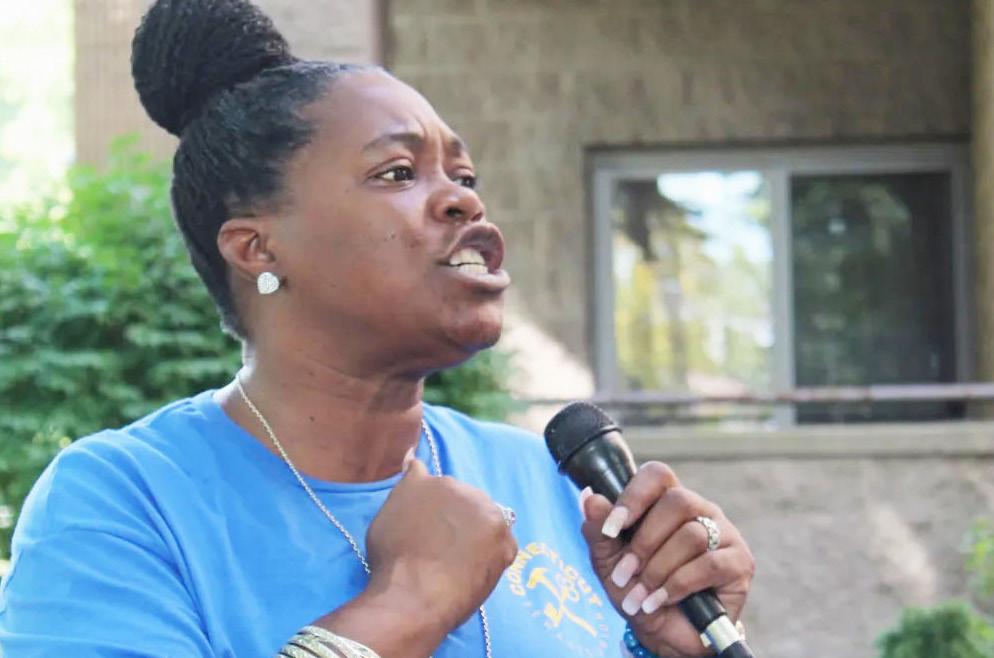
complained about unaddressed pest infestations, mold and mildew, severe maintenance issues, and safety issues. Dozens of residents in New Haven’s Sunset Ridge Apartments, purchased by an affiliate of Capital Realty in July 2023, claimed to have developed severe respiratory issues since moving into the building. That holding company has also filed 40 eviction lawsuits against the complex’s low-income tenants over the last two years.
Since forming in early August, the Park Ridge Tenants Union convinced Blumenthal, Murphy, and DeLauro to send a letter on Aug. 14 urging Capital Realty to engage in good faith negotiations.
The union also met with four members of Capital Realty’s upper management — including Eichler and Horowitz — over Zoom on Aug. 27. They scheduled a follow-up meeting with Capital Realty staff on Sep. 11.
According to CTTU Vice President Luke Melonakos, the landlord failed to show up to the second meeting or fulfill the promises Eichler made during the first, which included signing a non-retaliation statement and committing to basic


standards for repair timelines and quality.
On Friday, Blumenthal said he, Murphy, and DeLauro would sign a letter urging Capital Realty to come back to the bargaining table.
While union members didn’t meet with anyone on Sept. 11, according to a Sept. 12 CTTU press release, the union spoke in-person with Capital Realty Regional Asset Manager Tim Teicher on Sept. 9. According to that press release, in that two-and-half-hour meeting, Teicher agreed to con-crete timelines for implementing new security measures, providing accessibility and language ac-commodations, and conducting a thorough repair of the building’s heating and cooling systems.
On Friday, Gerene Freeman, Vice President of the Park Ridge Tenants Union, said she’s seen con-tractors laying down new carpet and repainting the common room walls from blue to beige. She’s also noticed new green lighting on the exit signs and boxes of fresh cabinets, previously in the hallways and now, she assumes, installed in some units.
According to a Sept. 25 CTTU press



release, the landlord finally replaced the faulty, noisy boiler that had been a top concern of tenants for almost a decade.
On Friday, CTTU President Hannah Srajer and Vice President Luke Melonakos clarified that the building’s maintenance person told them a new boiler had been installed, but they weren’t able to confirm that firsthand. Freeman said she’d seen two HVAC trucks outside the building, as well as people carrying out rusty parts of what seemed to be a boiler, but she hadn’t seen the new boiler herself.
Since the boiler is off during the summer, none of the tenants could say whether it has started working properly or still makes noise.
Either way, there’s still a lot of work left to be done on the building, residents stressed.
For example, Chris Urquhart, a union member who’s lived in the building for ten years, said the building needs a better trash system to keep pests away. Freeman agreed, noting, “Already we have raccoons doing their grocery shop-



ping in the dump-ster.”
When this reporter walked around Park Ridge Friday, the sour smell of rotting trash, intensified by the hallways’ heat and humidity, hit as soon as the elevator doors opened on a residential floor. Urquhart also mentioned that the complex’s 72 units are serviced by a single maintenance person, which means that it can take several weeks for even severe problems to be fixed. She’s lobbying for the building to hire another handyman. Rosalind Shaw, a caretaker for resident Earnease Daniels, experienced a different type of mainte-nance issue. After Daniels soiled her carpet, she claimed building management told her they’d only replace it if Daniels moved out. Because Daniels had nowhere else to go, Shaw and her brother paid an external contractor nearly a thousand dollars to clean the carpet instead.
Residents are also still waiting for upgrades to the building’s package delivery system and overall security. Melonakos and Freeman said Teicher promised to place sofas and chairs near the eleva-tors — a priority for the building’s many tenants with mobility issues — and schedule an extermi-nator to visit the building twice a month.
At a broader level, the union is still demanding recognition.
“What we’re looking for is respect, accountability, and a man of his word,” said Srajer. “At the core of this press conference” is a clear message: “respect the union.”
She emphasized that even though the landlord is beginning to take action, once the public pressure is off, they may revert to their old practice of ignoring tenants’ complaints. For that reason, she ar-gued, Capital Realty needs to recognize the union and sign written commitments. By skipping the Sept. 11 meeting, Urquhart feels that Eichler has indicated that the residents of Park Ridge are “not important enough” for him. If she had the chance, she said, she’d tell Eichler, “Get your shit together, come here, and at least meet with your tenants.”
According to Freeman, only one of the building’s eight residential floors has been allowed to have plants in the hallways; on the other floors, management has required tenants to remove all greenery.





Yale Rep joyfully invites Black theatergoers to experience Zora Neale Hurston’s Spunk in community on Black Theater Night! This performance will be followed by a conversation with members of the company. All are welcome!
All tickets for this performance are only $35 (reg. $65) with code BTN35 .

A tall, handsome stranger strolls into town looking for work. With undeniable charisma and divine musicianship, Spunk sets tongues to wagging with admiration and envy. The laws of man, the power of hoodoo, and the divinity of love all collide when he locks eyes with Evalina, already married to the local conjurer’s son. A fable about the triumph of love, Zora Neale Hurston’s play, Spunk, reaches the stage for the first time, brimming with humor, romance, and music.
By National Head Start Association
October is Head Start Awareness Month. There is no singular look to Head Start — its federal-to-local structure has served communities and families well over the past six decades, benefiting from the ability to adapt and connect to the unique priorities of in-dividual communities. National standards ensure a baseline of quality. In addition, Head Start programs demonstrate a rich breadth and depth of services across locations — reflecting the spirit, priorities, and cultures of local communities and the parents who help lead each program. The following examples, a small selection from a broader na-tional compendium, illustrate some of the myriad ways that Head Start is adaptable, flexible, and provides communities with the ability to best meet the needs and prefer-ences of local families and children.
Head Start programs create engaging environments to encourage children’s natural curiosity and exploration and foster a love of learning.
Through quality teacher-child interactions, strong developmental standards, and locally chosen curricula, Head Start ensures all children are ready for kindergarten. Since its inception in 2012, the highly popular Mandarin program at Albina Head Start in Ore-gon has expanded from three classrooms to 17. Daily Mandarin instruction incorporates methods like singing, dancing, movement, art activities, and games. This approach al-lows children to learn another language while having fun. In Ohio, the Aullwood Audu-bon Center and Farm partners with the Miami Valley Child Development Centers to op-erate a Head Start classroom on a working farm. The program meets all Head Start standards and follows the High Scope curriculum. The children also spend extensive time outdoors on the farm every day, even doing farm chores.
Head Start ensures that geography or unique circumstances are not obstacles to getting a strong start in life. Whether located at the bottom of the Grand Canyon for remote families or on military installations for active service families, Head Start is there. The Rural Alaska Community Action Program provides homebased Early Head Start ser-vices to meet the needs of eight remote Alaska Native communities that engage in sub-sistence activities, including moving to itinerant

fish camps during the summer months.
The Fort Carson Head Start Center, located on the Fort Carson (Colorado) army base, serves more than 100 children, more than 80% of whom have a parent serving in the military. The program is especially equipped to address separation issues that come with parental deployment. Head Start addresses critical health and nutrition needs so that children are fully ready to learn and grow.
It ensures children who otherwise may be experiencing food insecurity are provided with nutritious meals and snacks, often including months when the program is closed. And Head Start brings health services where they are needed most,
directly to children while at school or to them and their families through mobile health units and local community health and dental clinics. Through on-site food pantries with local fresh veg-etables and dairy, gardens in the outdoor space, hydroponic plant towers, and a from-scratch kitchen, Colorado’s Clayton Early Learning provides children and parents with nutritious food options for their families.
The Anoka/Washington County Head Start in Minnesota partners with two local dental clinics to provide on-site dental services for their children and families. This has made it possible to avoid long waiting lists and get necessary dental care much sooner than would be the case in the
community at large.
Head Start meets children’s early intervention needs more readily than most other community options.
Recognizing the gap in services for children with low vision and blindness, the Los Ange-les Office of Education and the Blind Children's Center created Early Head Start main-stream classrooms that specialize in supporting children with visual impairments. They also help parents and caregivers learn the specialized skills needed to support their vi-sion-impaired child’s growth. In 2020, Indiana’s Community Schools Head Start took a creative approach to addressing their children’s anxiety and mental health challenges
caused by the pandemic: a therapy dog. Westin, the therapy dog, helps children regulate their emotions, cope with separation anxiety from their parents, practice patience, and much more.
Head Start provides a two-generation approach to lift families out of pov-erty, recognizing that empowering parents helps strengthen families.
Through Head Start, parents and caregivers are supported in their efforts to enroll in work and adult education programs, connect to community resources, and engage in parenting activities that emphasize their role as their children’s first teacher. At the Genesis Center in Rhode Island, parents and children learn together. Through the Chil-dren’s Friend Early Head Start-Child Care Partnership, parents attend adult education classes while children participate in Head Start. Parents are supported on their path to financial security through adult education classes, career support, bus vouchers, tax as-sistance, and a special savings-match program through the Bank of Newport. The Eco-nomic Security Corporation Head Start in Missouri works with a local bank to build par-ents’ financial literacy and credit scores. Parents and caregivers learn about savings and checking accounts, how to build credit, and other vital financial skills.
Strong community partnerships help stretch limited federal dollars. For example, Head Start expands parent choice with local partnerships that extend care for parents who are working or in school, or have transportation needs. San Diego’s Metropolitan Area Advi-sory Committee Child Development Program maximizes Head Start and state funding to provide both center-based and home-based options for families. Family child care homes may utilize and adjust or renovate existing space in a home to provide pro-gramming that meets Head Start quality standards. Parents and Children Together Head Start in Honolulu’s Kahauiki Village is located in an affordable housing communi-ty for families who were formerly homeless. Built through a private/public partnership in response to Hawaii's growing unhoused population, Kahauiki Village offers Head Start services augmented with additional early childhood funds to run 10 hours a day throughout the year, enabling parents to work or complete their education.



by Alayna Treene, Bryan Mena and CNN
Washington (CNN) — American farmers are having a tough year, in no small part because of President Donald Trump’s trade war. Now, the White House is gearing up to extend them a multi-billion-dollar bailout, sources tell CNN.
Surging costs and foreign retaliation from tariffs have hurt the US agriculture industry — as have immigration-related labor shortages and plummeting commodity prices. Farm production expenses are estimated to reach $467.4 billion in 2025, according to the Agriculture Department, up $12 bil-lion from last year.
Farm bankruptcies rose in the first half of the year to the highest level since 2021, according to US courts data.
Trump’s policies have exacerbated those woes, from the deportation of the industry’s key migrant workforce to renewed trade tensions between the United States and China. And for traditional American crops, such as soybeans, the situation has grown particularly precarious.
“There’s no doubt that the farm economy is in a significant challenge right now, especially our row croppers,” Agriculture Secretary Brooke Rollins told reporters Tuesday. “So not just soybeans, although I think they’re probably the top of the list, but corn, wheat, sorghum, cotton, et cetera.”
Sign up for our free newsletters and receive unparalleled coverage of Atlanta’s African American community in your inbox.
Indeed, the US soybean industry has become the poster child of the farm economy’s plight in the first year of Trump’s second term. The president recognizes these problems, White House officials tells CNN, and has increased pressure on his administration to address them urgently.
Over the past few weeks, the White House has held a series of interagency meetings with the De-partments of Agriculture and Treasury as they attempt to finalize a relief package for US farmers,
the sources said. Discussions over the best way to aid the agriculture industry are ongoing, the of-ficials said, but they have zeroed in on two options.
“There are a lot of levers we can use to help ease the pain they are feeling,” one of the officials told CNN. One idea, floated publicly by Trump as recently as Wednesday, is to give farmers a percent-age of the income the United States is receiving from the administration’s tariffs on goods being imported into the country.
“We’ve made so much money on Tariffs, that we are going to take a small portion of that money, and help our Farmers.
I WILL NEVER LET OUR FARMERS DOWN!” Trump wrote on social media this week. The other is tapping into a “slush fund,” as the officials described it, at the De-partment of Agriculture.
The Trump administration also dipped into the fund, known as Emergency Commodity Assistance Program (ECAP), in March to similarly provide assistance to farmers. USDA at the time issued $10 billion in direct payments to eligible agricultural producers of eligible commodities for the 2024 crop year.
The administration has also discussed implementing a combination of the two, depending on where they can most quickly pull the funds from, one White House official said. The current range of aid they are looking to offer ranges from $10 billion to $14 billion.
“The final figure will depend on how much farmers need and the amount of tariff revenue coming in,” the official told CNN.
Trump himself as privately been applying pressure on his team to ensure that American farmers, many of whom the Trump administration credit for helping the president win the November 2024 election, are protected. But the other reason they are making the agriculture industry such a priority, officials say, is because the Trump administration views protecting farmers as a national security issue.
“We need to grow our own food. We can’t rely on imports from other countries, that poses a prob-lem for national

security. And right now, the government is subsidizing a lot of that process,” one Trump administration official argued. US soybean industry in crisis
An issue complicating the Trump administration’s goals revolve around soybeans — America’s largest agricultural export, valued at more than $24 billion in 2024, according to USDA data.
Last year, about half of those exports went to China, but since May, that’s dropped down to ze-ro as a result of an effective embargo China has placed on US soybeans in retaliation for Trump’s tariffs on the country. China has implemented 20% tariffs on US soybeans, making the crop from other countries significantly more attractive.
That couldn’t come at worse time for soybean farmers, with the harvest season in full swing and some farms reporting strong yields. And their luck might not change anytime soon, with Beijing ramping up its reliance on South America — inadvertently aided the US Treasury’s
financial life-line provided to Argentina in recent weeks.
Last week, the Trump administration said it would arrange a $20 billion lifeline to Argentina’s cen-tral bank, which would exchange US dollars for pesos to help stabilize Argentina’s financial mar-ket. Argentina also temporarily scrapped export taxes on grains to help stabilize the peso, but China didn’t waste any time.
Beijing purchased “at least 10 cargoes of Argentine soybeans,” according to a report from Reuters. Brazil has also helped meet China’s demand for soybeans, with both countries announcing a pact in July to deepen agricultural trade ties.
As a result, America’s hobbled soybean industry is calling on the Trump administration to finish its trade negotiations with China.
“US soybean farmers have been clear for months: the administration needs to secure a trade deal with China. China is the world’s largest soybean customer and typically our top export market,” Ameri-
can Soybean Association President Caleb Ragland said last week in a statement. Pressure on Trump
Many farmers say time is of the essence as they start to bring in this year’s crop. “We’re always hopeful that those negotiations are moving forward, but yet with harvest here, pa-tience may be running thin,” one Indiana farmer told CNN, describing the industry’s many chal-lenges, which also include the deportation of key workers.
On Wednesday, Trump blamed China for the pain soybean farmers are facing, arguing Beijing is refusing to buy soybeans for negotiating purposes amid the two countries’ tariff dispute. He added that he plans to make soybeans “a major topic of discussion” when he meets face-to-face with Chi-na’s President Xi Jinping in South Korea next month.
Part of the reason Trump has given the issue so much attention, White House officials say, is be-cause Rollins has forced the issue with not only the president, but also one of his closest advisers: Treasury Secretary Scott Bessent.
On Tuesday, a photo of Bessent’s phone captured by the Associated Press went viral, showing a text from a contact named “BR,” presumed to be Rollins. Her messages illustrated panic within the Trump administration over the soybean industry’s woes, which worsened over the Argentina or-deal.
During this “time of uncertainty” for farmers and ranchers, Rollins said that she is in “constant communication” with the White House and partners across the government. Rollins also called Trump’s idea of temporarily giving tariff revenue to farmers “a very elegant solution.”
“To this moment of uncertainty, the ability to offset any payments to the farmers through potential tariff revenue is really where the president wants us to head, and that’s what we’re looking at,” she added.
The state of Illinois sued President Donald Trump on Monday over his effort to deploy National Guard troops to Chicago, expanding the multistate court fight challenging Trump's authority to send military forces into U.S. cities.
The lawsuit, filed hours after the president ordered hundreds of Texas Guard soldiers to deploy for "federal protection missions" in Chicago and Portland, Oregon, followed a stern ruling by a federal judge blocking Trump from sending guard members from any state to Oregon.
Gov. JB Pritzker of Illinois, a Democrat, has objected to the deployment of troops, and in the law-suit, Chicago and Illinois officials argue that the administration's "provocative and arbitrary actions have threatened to undermine public safety by inciting a public outcry." A U.S. military official said Monday morning that the first

group from the Texas Guard, about 200 troops, were en route to Chicago.
The torrent of moves by the Trump administration, with consequences for states from California to Illinois, Oregon to Texas, has left courts across the country scrambling to keep pace.
The ruling by the federal judge in Oregon, Karin Immergut, on Sunday night came in response to the Trump administration's bid to circumvent a restraining order she had issued a day earlier. In it, she had blocked Trump from sending hundreds of California Guard troops to Portland. After Trump moved to replace the California troops with soldiers from Texas, Immergut broadened her order to cover "the relocation, federalization or deployment of members of the National Guard of any state or the District of Columbia in the state or Oregon."
In Illinois, where Pritzker on Sunday
referred to the mustering of federalized troops as "Trump's Invasion," the presence of federal immigration agents in the city and its suburbs has heightened tensions. Agents have deployed tear gas on city streets with no warning, raided apartments and zip-tied residents for hours in the middle of the night, and handcuffed a City Council member at a hos-pital after she asked for a detainee's arrest warrant.
Mayor Brandon Johnson of Chicago, a Democrat, said Monday morning that he would issue an executive order establishing "ICE-free zones," which would ban federal immigration agents from setting up staging areas on city property or private businesses without a warrant. "We cannot allow them to rampage through our city with no checks or balances," Johnson said. "If Congress will not check this administration, then Chicago will."
The Town of Wallingford Department of Public Works has openings for Maintainer II. Applicants should possess 2 years’ experience as a laborer in construction work involving the operation and care of trucks and other mechanical equipment, or 2 years training in one of the skilled trades and 1 year of experience in construction operations, or an equivalent combination of experience and training. A valid (CDL) Class B or higher is required. $24.87 - $29.16 hourly plus retirement plan, paid sick and vacation time, life insurance, 13 paid holidays, family medical & dental insurance, and promotional opportunities. To apply online by the closing date of September 12, 2025, please visit: www.wallingfordct.gov/government/de partments/human-resources/. Applications are also available at the Department of Human Resources located in Room #301 of the Town Hall, 45 South Main Street, Wallingford, CT 06492. Phone: (203) 294-2080; Fax: (203) 294-2084. EOE
The Housing Authority of the City of New Haven d/b/a Elm City Com munities is currently seeking Proposals for Pay Per Use Laundry Services
A complete copy of the requirements may be obtained from Elm City’s Vendor Collaboration Portal https://newhavenhousing.cobblestonesys tems.com/gateway beginning on
Wednesday, September 17, 2025 at 3:00PM
Project Manager Consulting Services - 64-66 Wasson Avenue, Lackawanna, New York. (Section 141,43, Block 2, Lot 20,21,22,23,24,25,40,41,42,43,44,45,46,47,1)
The Glendower Group is seeking proposals from firms for project management services for a Project located at 64-66 Wasson Avenue. New York. A complete copy of the requirement may be obtained from Elm City’s Vendor Collaboration Portal https://newhavenhousing.cobblestonesystems.com/gateway beginning on Wednesday, October 8, 2025, at 3:00PM.
Opening for a full time HVAC/Oil/Heating Technician Apprentice. Candidate must possess a technical school certificate in heating, ventilation, air conditioning, oil, propane and natural gas. Send resume to: HR Manager, P. O. Box 388, Guilford, CT 06437 or email HRDept@eastriverenergy.com
**An Affirmative Action/Equal Opportunity Employer including Disabled and Veterans**

The Town of Wallingford is accepting applications for System Operator/Dispatcher. Wages: $43.05 to $50.36 hourly. For additional information and to apply online by the October 27, 2025 closing date, please visit: www.wallingfordct. gov/government/departments/human-resources/. Ap-plications are also avail-

The Town of Wallingford, CT is accepting applications for Metering Supervisor. Wages: $115,203 to $144,003 annually. For additional information and to apply online be the November 4, 2025 closing date, please visit: www.wallingfordct.gov/government/departments/human-resources/. Applications are also available at the Department of Human Resources located in Room #301 of the Town Hall, 45 South Main Street, Wallingford, CT 06492. Phone: (203) 294-2080; Fax: (203) 294-2084. EOE

Wednesday, September 24, 2025, at 3:00PM. The State of Connecticut, Office of Policy and Management is recruiting for a Criminal Justice Policy Assistant Division Director (Office of Policy
The Glendower Group, Inc. is currently seeking bids for General Contractor for ST. Lukes Redevelopment. A complete copy of the requirement may be obtained from Glendower’s Vendor Collaboration Portal https://newhavenhousing.cobblestonesystems.com/gateway beginning on
THE ELM CITYCOMMUNITIES, HOUSING AUTHORITY OF NEWHAVEN (ECC/HANH)
PROPOSED AMENDMENT TO THE LIPH ADMISSION AND COMTINUED OCCUPANCY PLAN (ACOP) AND HCV ADMINISTRATIVE PLAN (ADMIN PLAN)
Elm City Communities, the Housing Authority of the City of New Haven (ECC/HANH) is propos-ing to amend sections of its Low-Income Public Housing Admissions and Continued Occupancy Policy (ACOP) and the Housing Choice Voucher (HCV) Administrative Plan (Admin Plan).
The thirty (30) days comment period begins on Monday, September 29, 2025, and ends on Tuesday, October 28, 2025. Copies of the amendment to the ACOP and the Administrative Plan will be available on the agency website www.elmcitycommunities.org or via Facebook, www.facebook.com/ElmCityCommunities and Instagram, elmcitycommunities_hanh.
You are invited to provide written comments addressed to: ECC/HANH, ACOP & Admin Plan Revisions; Attn: Evelise Ribeiro, 360 Orange Street, New Haven, CT 06511 or via email to: eribei-ro@elmcitycommunities.org.
A public hearing where public comments will be accepted and recorded is scheduled for Mon-day, October 27, 2025,3:00pm, via TEAMS.
ID: 298 581 151 620 1 Passcode: WP7wr6tg Dial in by phone
+1 872-240-4494,747680648# United States, Chicago Find a local number Phone conference ID: 747 680 648#
Any individual requiring a Reasonable Accommodation to participate in the hearing may call the Reasonable Accommodation Manager (203) 498-8800, ext. 1507 or at the TDD Number (203) 497-8434.
ELM CITYCOMMUNITIES, AUTORIDAD DE VIVIENDA DE NEW HAVEN (ECC / HANH) PROPUESTA DE EN-MIENDA AL PLAN DE ADMISIÓN Y OCUPACIÓN COMTINUADA (ACOP) DE LA LIPH Y AL PLAN ADMINISTRATIVO DE AVC (PLAN ADMIN)
Elm City Communities, la Autoridad de Vivienda de la Ciudad de New Haven (ECC / HANH) está proponiendo revisar secciones de su Política de Admisiones de Vivienda Pública de Bajos Ingresos y Ocupación Continuada (ACOP) y el Plan Administrativo de Vales de Elección de Vivienda (HCV) (Admin. Plan).
El período de treinta (30) días para presentar comentarios comienza el lunes 29 de septiembre de 2025 y fi-naliza el martes 28 de octubre de 2025. Copias de la enmienda al ACOP y al Plan Administrativo estarán dis-ponibles en el sitio web de la agencia, www.elmcitycommunities.org, o a través de Facebook, www.facebook.com/ElmCityCommunities e Instagram, elmcitycommunities_hanh.
Le invitamos a enviar sus comentarios por escrito a: ECC/HANH, ACOP y Revisiones del Plan Administrativo;
Atención: Evelise Ribeiro, 360 Orange Street, New Haven, CT 06511, o por correo electrónico a: eribei-ro@elmcitycommunities.org.
Se ha programado una audiencia pública para el lunes 27 de octubre de 2025 a las 15:00 h, a través de TEAMS, donde se aceptarán y grabarán los comentarios del público.
ID: 298 581 151 620 1 Contraseña: WP7wr6tg Llamar por teléfono +1 872-240-4494,747680648# Estados Unidos, Chicago Buscar un número local ID de conferencia telefónica: 747 680 648#
Cualquier persona que requiera una adaptación razonable para participar en la audiencia puede llamar al Gerente de Adaptaciones Razonables al (203) 498-8800, ext. 1507 o al número TDD (203) 497-8434. Cualquier persona que requiera una adaptación razonable para participar en la audiencia puede llamar al Gerente de Adaptaciones Razonables al (203) 498-8800, ext. 1507 o al número TDD (203) 497-8434.

The Housing Authority City of Bristol (BHA) is seeking proposals from qualified firms for ongoing Information Technology (IT) and Computer Support Services through help desk support as well as onsite support. Proposals are due on or before November 6, 2025, at 3:00 PM.
The complete RFP documents can be obtained at www.bristolhousing.org or by contacting Luis Velazquez, Director of Capital Funds, at lvelazquez@bristolhousing.org or phone 860-585-2028. Interested parties are invited to a pre-bid conference held on October 23, 2025, at 11:00 AM at 164 Jerome Ave., Bristol, CT.
The Housing Authority of the City of Bristol is an Equal Opportunity/Affirmative Action Employer. SBE, MBE, W/DBE, and Section 3 businesses are encouraged to respond.

Sound Communities, Inc., the development arm of the Norwalk Housing Authority, is seeking qualifications from experienced and capable development firms to serve as Co Developer for the planned SoNo Train Station Project. The selected firm will partner with Sound Communities, Inc., in all phases of project activities including but not limited to predevelopment, financing, construction, and lease-up operations. Interested parties must demonstrate proven experience in housing development, developing 9% LIHTC projects , and management of multi phase projects, as well as familiarity with applicable local, state, and federal regulations. RFQ documents are available at www. norwalkha.org under Doing Business handle. Submissions must be received no later than November 7th, 2025, at PM EST. to sstewart@soundcommunities.ct.org, or for more information, contact Sophia Stewart, Project Coordinator, sstewart@soundcommunitiesct.org. Norwalk Housing Authority is an Equal Opportunity Employer.
Submission due date: November 7th , 2025, at 5pm
Send proposals to: sstewart@soundcommunitiesct.org
Request for Information must be submitted by: October 24th , 2025 Send Request for Information to: sstewart@soundcommunitiesct.org
241 Quinnipiac Avenue, New Haven which are two bedrooms and rent from $1,950-$2,000 and include heat, hot water and cooking gas, private entrance, off street parking and onsite laundry. I have a couple with washer/dryer which are $2,000. Please bill 241 Quinnipiac Avenue, LLC, 111 Roberts Street, Suite G1, East Hartford, CT 06108.
Also, I have a 3 bedroom unit at 254 Fairmont Avenue, New Haven. They rent for $2,050 and the tenant pays all the utilities. Off street parking and private entrance. Section 8 welcomed.
Also, I have a 2 bedroom at 248 Fairmont Avenue, New Haven. They rent for $1,950.00 and the tenant pays all the utilities. Off street parking and private entrance. Section 8 welcomed.
Please bill the Fairmont Avenue to 258 Fairmont Avenue, LLC at the same billing address as 241 Quinnipiac Avenue. I will be the contact person for them to call at 860-231-8080, ext. 161.
The Town of Wallingford, CT is accepting applications for Metering Supervisor. Wages: $115,203 to $144,003 annually. For additional information and to apply online be the November 4, 2025 closing date, please visit: www.wallingfordct.gov/government/departments/human-resources/. Applications are also available at the Department of Human Resources located in Room #301 of the Town Hall, 45 South Main Street, Wallingford, CT 06492. Phone: (203) 294-2080; Fax: (203) 294-2084. EOE
By Stacy M. Brown
Black Press USA Correspondent
MAGA Republicans have shut down the government once again after lawmakers failed to strike a deal to keep the lights on, leaving hundreds of thousands of workers without pay and millions of Americans facing the possibility of losing affordable health care. At the center of the crisis is a dispute over Medicaid and the Affordable Care Act. Democrats are demanding that subsidies be extended and that deep Medicaid cuts be reversed. Republicans, led by President Donald Trump, have rejected those calls and pushed ahead with a funding bill that ex-cludes the protections. The result is a standoff with devastating consequences. Officials told Black Press USA that the shutdown will furlough roughly 750,000 federal employees each day in an already compromised economy, with Trump’s administration warning that many will not simply be furloughed but perma-nently laid off. A memo from the Office of Management and Budget directed agencies to prepare not only for temporary cuts but for reduction-in-force no-tices that would erase positions. Entire programs that fall outside of Trump’s priorities are at risk of being dismantled.
Democrats blocked the Republican plan after warning that allowing the subsidies to expire would make health insurance unaffordable for millions of working families.
Senate Minority Leader Chuck Schumer and House Minority Leader Hakeem Jeffries said the fight is about protecting ordinary people from finan-cial ruin. They stated that Trump is ignoring the suffer-

ing of Americans and in-stead is “obsessively posting crazed deepfake videos” while refusing to negotiate in good faith.
The financial stakes are clear. According to new research from KFF, premiums for many families are already expected to rise by more than 100 per-cent if enhanced tax credits are not extended. Nearly 24 million Americans who buy their own coverage could see their costs double or even triple. For low-income enrollers, the losses would be crushing. A worker in Texas making $23,000 annually would see premiums jump from zero to $920, an amount equal to nearly a quarter of their annual food budget. Moderate-income house-holds face even starker realities. A 60-year-old couple in Florida earning $85,000 would lose more than $16,000 in tax credits and see
The United States capitol building with a crack and red Government Shutdown stamp
premiums soar by $21,000 in a single year. Their coverage would consume nearly onethird of their income.
The increases come at a time when families are already under strain from infla-tion. Rising food, housing, and utility costs are combined with health expenses to push working households closer to the brink. The burden will fall hardest on small business owners, farmers, and gig workers, groups that Republicans often claim to represent. KFF analysis also shows that Black Americans, who dispro-portionately rely on ACA coverage, will be among those most severely affected. Many already live on thinner margins and face higher rates of chronic illness. For those families, the spike in health care costs combined with the threat of Medicaid cuts could be dev-
astating. Meanwhile, the Department of Health and Human Services will furlough nearly half of its staff. At the Centers for Disease Control and Prevention, work to track disease outbreaks will continue, but pre-vention research will stop. At the National Institutes of Health, patients already enrolled in clinical trials will continue receiving treatment, but no new patients will be admitted to potentially life-saving studies. The Food and Drug Admin-istration warned that its ability to review new drug applications and medical de-vices will be severely impaired.
The damage extends beyond health care. National parks will remain open with skeletal staffing, risking vandalism and safety hazards. Smithsonian museums will stay open for a few days, but could eventually
shut down. Federal contracts will stall, benefit payments could face delays, and agencies from education to en-vironmental services will be hamstrung. Economists warn that the longer the shutdown continues, the greater the impact on the broader economy. Goldman Sachs projected that gross domestic product will fall by 0.15 percentage points each week as the government remains closed, with effects rippling into the pri-vate sector and eroding consumer confidence. Wall Street already reacted with early losses as markets opened on the first day of the shutdown.
The political standoff is showing no signs of easing. MAGA Republicans have no appetite to digest Americans enjoying affordable healthcare and have prioritized tax breaks for billionaires instead. Democrats insist there will be no deal without protections for the Affordable Care Act and Medicaid. Both sides know the stakes reach beyond the shutdown. For Democrats, the fight is about protecting vulnerable Americans. For Trump and Republicans, it is about cementing an agenda that weakens federal programs and reshapes health care in the name of cost-cutting. As the shutdown enters its first days, millions of Americans are left in limbo. Families struggling to pay for food and rent now face the prospect of health care costs doubling or tripling. Schumer and Jeffries issued a warning in their joint statement. “President Trump’s behavior has become more erratic and unhinged,” the duo stated jointly. “Instead of negotiating a bipartisan agreement in good faith, he is obsessively posting crazed deepfake videos.”





















by Mildred Europa Taylor, Face2FaceAfrica.com
In 2028, Dartmouth will have its first campus building named after a woman and its first named after a Black alum. Shonda Rhimes, the celebrated showrunner, producer, screenwriter, and author behind productions like “Grey’s Anatomy” and “Scandal,” pledged $15 million to the school.
The donation is to support the 115bed residence hall to be built on West Wheelock Street that will bear her name. Construction of the Shonda Rhimes Hall is expected to begin early next year and open in 2028 in time to welcome the Class of 2032, the university said in a statement.

ations of Dartmouth students who will write their own stories here with that same expansive sense of possibility.”


“This extraordinary gift is pivotal for Dartmouth at this time,” said Dartmouth Presi-dent Sian Leah Beilock, who began discussing the gift with Rhimes two years ago. “It will directly enhance the student experience while reimagining a key part of campus. I’m grateful to Shonda, who has made a career of creating inclusive worlds where any one of us can be the protagonist of the story. We are honored that her name will grace this building and be a beacon of welcome to the gener-

Rhimes said the gift is an opportunity to show how formative her college experience was for her. “It’s also really beautiful to be able to place some legacy on the build-ing—to give back what was given to me and to leave something behind,” she said.
“And at a time when it feels like people are questioning the value of higher education, it feels important to put my money back into higher education,” Rhimes, who is on the Dartmouth Board of Di-rectors, added.
Dartmouth’s move to build new undergraduate housing on West Wheelock Street is part of Beilock’s $500 million commitment to create at least 1,000 new beds for students, faculty, and staff in the next 10 years.
The goal is to provide housing for more than 90% of undergraduates and make hous-ing more affordable for the surrounding communities in the Upper Valley.
When Shonda Rhimes Hall opens in fall 2028, it will house 115 jun-iors and seniors in apartment-style suites on the north side of West Wheelock Street between the Connecticut River and Thayer Drive, the university said. Rhimes, who has been inducted into the Television Academy Hall of Fame and Dartmouth’s Entrepreneurs Hall of Fame, lived on cam-pus for all four years as an undergraduate.
“I was a very sheltered kid, and coming to Dartmouth opened my eyes to the world in a way that I never imagined possible—and I could imagine a lot,” the Shondaland CEO said of the Dartmouth residential experience. Describing itself as one of the world’s greatest academic institutions and a member of the Ivy League, Dartmouth says it has been educating leaders since 1769
Rhimes said the gift is an opportunity to show how formative her college experience was for her. “It’s also really beautiful to be able to place some legacy on the build-ing—to give back what was given to me and to leave something behind,” she said.
“And at a time when it feels like people are questioning the value of higher education, it feels important to put my money back into higher education,” Rhimes, who is on the Dartmouth Board of Directors, added.
Dartmouth’s move to build new undergraduate housing on West Wheelock Street is part of Beilock’s $500 million commitment to create at least 1,000 new beds for stu-dents, faculty, and staff in the next 10 years.
The goal is to provide housing for more than 90% of undergraduates and make hous-ing more affordable for the surrounding communities in the Upper Valley.
When Shonda Rhimes Hall opens in fall 2028, it will house 115 juniors and seniors in apartment-style suites on the north side of West Wheelock Street between the Connecticut River and Thayer Drive, the university said. Rhimes, who has been inducted into the Television Academy Hall of Fame and Dartmouth’s Entrepreneurs Hall of Fame, lived on campus for all four years as an undergraduate.
“I was a very sheltered kid, and coming to Dartmouth opened my eyes to the world in a way that I never imagined possible—and I could imagine a lot,” the Shondaland CEO said of the Dartmouth residential experience. Describing itself as one of the world’s greatest academic institutions and a member of the Ivy League, Dartmouth says it has been educating leaders since 1769.
Last Edited by:Mildred Europa TaylorUpdated:September 24, 2025
stopped him from marching with Martin Luther King Jr.
by Mildred Europa Taylor, Face2FaceAfrica.com
Growing up in the segregated South in the 1950s and 1960s, Lionel Richie longed to be part of the civil rights movement of the time, but his parents didn’t allow him to.
While promoting his new memoir, Truly, recently, the singer, who grew up in Tuskegee, less than 40 miles outside Montgomery, Ala., recalled how he wished to be part of the movement.
He told The Guardian that while writing the book, he realized how personal his connections to the civil rights movement were.
“What I didn’t realize was that it made up the core of who I was,” he told the outlet in an interview, adding that his parents kept him and his sister, Deborah, away from ac-tivism. “At the time I didn’t realize because our parents made a point of keeping a lot of that edge away from us. We were in the bubble.”
In 1965 when Dr. Martin Luther King, Jr. led civil rights marches from Selma to Montgomery, Richie wanted to be part of them but his parents stopped him. “I was longing to be part of it. And my parents kept telling me it was dangerous.”
“I was angry, because I thought they had left me out of some of the most significant history,” the “All Night Long” singer recounted. “My anger came when I realized what my grandmother and grandfather had gone through, what my mom and dad had gone through.”
Richie later asked his parents, “Why did you not tell me? Why did you not involve us in this?”
“Their answer was, ‘We didn’t want anything to limit you in your thinking of what the possibilities for your future could be,'” he told The Guardian. “‘And if we had attached you to our anger then you would be

Source: Instagram.com/@lionelrichie
stuck in our anger.'”
he musician noted that his parents’ frustration and anger were not possible to miss.
“You couldn’t miss it,” he said. “Every day I was aware of the anger, because there was a Tuskegee anger.”
Richie, who could have been a professor of black history had he not pursued music, shared what he thinks his parents would have made of the U.S. today and the Trump administration.
“You know what, I’m glad my dad and that group is not here. It would be tough. I can’t even imagine,” said the singer.
“I made a statement in 1983 when we were talking about civil rights, and I said, ‘We still talk about that?,’ as if to say that’s behind us, we’re interested in the future,” he recounted. “Now, here we are 42 years later and we’re still talking about the same thing. But it’s even worse. What I’m watching now is not only going backwards, but it is the erasing of history.”
President Donald Trump on Monday revealed that convicted mu-sic executive Sean “Diddy” Combs asked him for a presidential pardon in his high-profile federal sex trafficking case.
Trump, 79, touched on the topic while speaking with CNN’s Kaitlan Collins about the likelihood of granting Jeffrey Epstein’s ex-girlfriend, Ghislaine Maxwell, a pardon. Trump stated that Combs and “a lot of people” have asked him for pardons. As previously reported by Face2Face Africa, a federal judge sentenced Combs, 55, to 50 months in prison on prostitution-related charges. U.S. District Judge Arun Subra-manian also fined him $500,000 and ordered five years of supervised release at a hearing in Manhattan federal court on Friday. Combs had faced up to 20 years behind bars.
The disgraced music executive and multi-millionaire was arrested by federal agents on September 16 last year and charged with sex trafficking, racketeering conspiracy, and transportation to engage in prostitution. Combs has, however, maintained his in-nocence.
A member of Combs’ legal team told
CNN in August that the Bad Boy Records founder’s representatives had contacted the Trump administration to discuss a potential pardon for him.
“It’s my understanding that we’ve reached out and had conversa-tions in reference to a pardon,” attorney Nicole Westmoreland told CNN’s Elizabeth Wagmeister at the time.
Trump had also initially stated that he wasn’t looking at grant-ing Combs a presidential pardon. “I was very friendly with him, I got along with him great and he seemed like a nice guy,” Trump told Newsmax. “I didn’t know him well. But when I ran for office, he was very hostile.”
Trump also stated that Combs’ hostility toward him was why it was “more difficult” to grant him the pardon.
Meanwhile, Combs’ legal team on Monday asked Judge Arun Subramanian to suggest to the Bureau of Prisons that he serve his sentence at a low-security federal correctional facility in Fort Dix, New Jersey, to enable him to “address drug abuse issues” and “maximize family visitation and rehabilitative efforts.”
by Mildred Europa Taylor, Face2FaceAfrica.com
Ashley Allison, a Democratic political strategist and CNN commentator, said last week that she is acquiring The Root from G/O Media, a digital media holding company controlled by a private equity firm.
The Root, a digital platform for and about Black America, is return-ing to Black ownership thanks to Allison’s move. The former Obama White House official said she plans to invest in video con-tent, build new partnerships with experts, and create in-person ex-periences for readers, according to CNN.
“This isn’t about making more content but rather about making meaning of this moment,” Allison said, describing a period “when journalism is under attack and audiences are seeking independent sources for news.”
Allison founded her company, Watering Hole Media, last year, and The Root is its first acquisition. Terms of the deal are not yet known.
The Root was founded in early 2008 by Harvard University profes-sor Henry Louis Gates Jr. and then-chairman of The Washington Post Company Donald E. Graham.
In 2015, it was acquired by Univision,

a Spanish-language media company. It brought together a portfolio of online brands but later abandoned its plan and sold titles to Great Hill Partners, a private equity firm, in 2019, according to CNN.
G/O Media, which came to own The Root and other brands like The Onion and Kotaku, couldn’t grow as expected, and by last summer, The Root was the only brand
‘I’m hurting like crazy’ – Deion Sand-ers provides scary health update after bladder cancer treatment
by Francis Alkhaybey, Face2FaceAfrica.com
Colorado Buffaloes coach Deion Sanders provided an update on his health after his bladder cancer treatment, stating that he thinks he has gotten “more blood clots.”
Per PEOPLE, Sanders, 58, touched on his health struggles after the Buffaloes lost 35-21 against the TCU Horned Frogs on Saturday.
“Cat’s out of the bag, all right. I think I’ve got more blood clots,” Sanders informed the media after the match.
“It don’t make sense. I’m hurting like crazy. I’m not getting blood to my leg.
That’s why my leg is throbbing.”
As previously reported by Face2Face Africa, Sanders, on July 28, opened up about being diagnosed with bladder cancer and having to go under the knife to remove the tumorous organ.
Per ESPN, Sanders disclosed that no traces of cancer had been found after he under-went the surgery to remove his bladder, adding that he was now going to return to his coaching duties this season. Sanders also disclosed that he lost around 25 pounds. Colorado team trainer Lauren Askevold said that the tumor was found in Sanders’ bladder when he underwent a usual routine vascular ex-am as a result of issues with blood clots in his legs.

Gates has since commended Allison “for returning The Root to its roots.”
Allison, in a statement, said the website “has always been about preserving culture and creating clarity in a world full of distrac-tions. Owning the power to tell our own stories is a rich tradition The Root is committed to upholding.”
Besides founding Watering Hole Media, Allison helped start the Turner Colony Group and became its CEO. Turner Colony Group provides strategic advice, consulting, and leadership development and training services, usually centered on campaigns and companies.
Allison also served as the National Coalitions Director for the 2020 Biden-Harris presidential campaign. She further worked as the deputy director and senior policy advisor for the Obama White House Office of Public Engagement, helping to run African-American outreach for Obama’s 2012 reelection campaign. Her strategy led to a four percent increase in Black turnout from 2008 to 2012. She subsequent-ly joined Enroll America in 2013 as the Director of Constituency and Partner En-gagement where she came up with a national and state strategy that helped enroll 1.5 million people in “Obamacare.”
Today, she is experienced in advocacy, community building, crisis management, co-alition building, and outreach, as reported by Harvard Political Review. She said in an interview with the platform in 2022 that her passion for campaign strategy comes from her desire to do good, fight for justice, racial equity and be a public servant.
“One of the ways — there are many ways you can do that type of work — but one of the ways that I decided to do
it was through campaigning because I wanted to work and elect people who were going to do that work while in public office and in government,” she told Harvard Political Review. “I’ve done this type of work in non-profits and just in movement, but I decided to join campaigns.”
“Really I worked on a lot of local campaigns before, but my first big, paid job was the Obama campaign. Obviously, he was a candidate of hope and change and historical nature, so he was the one who I was like ‘okay I’m going to change my career for.’”
Before entering politics, Allison was a high school special education teacher in Brooklyn, New York, who earned her master’s in education. She received her law de-gree with a specialty in public interest law focusing on voting and democracy, hous-ing rights, and racial equity. She also worked as a freelance journalist covering local Brooklyn, NY news. Allison later became the Board Chair for the Color of Change PAC Board and a member of the Free Press Action Fund Board. In 2021, she was appoint-ed a Harvard Kennedy School Institute of Politics Fellow.
The CNN commentator loves to teach yoga and meditation to women of color in her free time.
Dr. Janet Kukreja, the director of urological oncology at University of Colorado Cancer Center, confirmed that Sanders had been “cured of cancer,” and that was a “word” she did not use “lightly.” Kukreja said that a new bladder for Sanders was made with a por-tion of his small intestine.
This isn’t the first time Sanders has experienced a health setback. In 2021, two toes on his left foot were amputated due to his blood clot issues.
by Francis Akhalbey, Face2FaceAfrica.com
Ahead of his history-making 23rd NBA season, LeBron James, 40, made it known that he’s edging closer to retirement and not waiting for his son Bryce to earn a profes-sional contract before hanging up his jersey.
James fulfilled a desire last year when the Los Angeles Lakers drafted his eldest child, Bronny, and they ultimately became the first father-son duo to play in the NBA together. But while talking to reporters on Monday, the league’s all-time leading scorer and fu-ture Hall of Famer stated that he wasn’t “waiting on” his other son, Bryce, who plays for the Arizona Wildcats.
“He has his own timeline, I got my timeline, and I don’t know if they quite match up,” James added, per USA Today. During the offseason, James and the Lakers exercised his $52.6 million player option to remain on the franchise’s roster for the 2025-26 season. And though a deal has not been reached for James to continue playing for the franchise beyond the 2025-26 season, Lakers GM Rob Pelinka stated last week that they “would love if LeBron’s story would be he retired a Laker.”
James, on Monday, did not provide a specific timeline for his retirement. But he made it clear that he was not going to make that decision in consultation with his teammates.
“It’ll be a decision between me and my

wife and my daughter,” James said, adding that Bronny, 20, and Bryce, 18, are currently not staying with the family. “It won’t be a meeting with my teammates.”
The four-time NBA champion, however, likened his condition to the wine that he
drinks, implying that he gets better with age.
“I look at my age like the wine that I drink,” James told the report-ers. “The older wine I drink, the better it is.”









